
THANKS TO ROBERT BESSELING
PRADEEP TANEJA
HOLLY JADE O’LEARY
GEOFFREY WYNNE

LUCA CASTELLANI

JAMES HOOKHAM
JOHN LUCY

CARMIT GLIK
LAUREN PITTELLI
GADI BENMOSHE
PUNIT OZA
KELROY JAMES
SEAN BIRRELL
JACKSON WOOD
SAM GREENHALGH
JANE MARSH
TFG EDITORIAL TEAM
DEEPESH PATEL
CARTER HOFFMAN
BRIAN CANUP
DANIELA SANTOS
LAYOUT
JERRY DEFEO
PHOTOGRAPHS AND ILLUSTRATIONS
FREEPIK COMPANY S.L.
ADDRESS
201 HAVERSTOCK HILL
SECOND FLOOR
LONDON NW3 4QG
TELEPHONE
+44 (0) 2071181027
© Trade Finance Talks is owned and produced by TFG Publishing Ltd (t/a Trade Finance Global). Copyright © 2022. All Rights Reserved. No part of this publication may be reproduced in whole or part without permission from the publisher. The views expressed in Trade Finance Talks are those of the respective contributors and are not necessarily shared by Trade Finance Global.
Although Trade Finance Talks has made every effort to ensure the accuracy of this publication, neither it nor any contributor can accept any legal responsibility whatsoever for the consequences that may arise from any opinions or advice given. This publication is not a substitute for any professional advice.
Head of Trade & Export Finance
and Worcester
2 TRADE FINANCE TALKS
56 30 28
GEOFFREY WYNNE
Sullivan
LUCA CASTELLANI Legal Officer UNCITRAL
SEAN BIRRELL CTO and Co-founder Veridapt
3 CONTENTS 1 FOREWORD 4 1.1 Uncertainty in the high seas: how international trade can survive 2023 6 2 FEATURED 8 2.1 Trade volume, commodity and insurance predictions for 2023 10 2.2 African trade encouraged by improved 2023 country risk outlooks 15 2.3 13 common Letter of Credit and Bill of Lading frauds: Learning from the Solo Industries and Saad Group fraud cases 18 2.4 How to use Incoterms® proficiently: risk, responsibility, and transfer operations 25 2.5 Updated digital trade rules: ITFA, URTEPO, and streamlining payment obligations 28 2.6 Think data, not documents: advancing MLETR in 2023 30 3 SHIPPING AND LOGISTICS IN 2023 32 3.1 Shippers navigate a troubled market 34 3.2 UK Freeports: catalysts for regional economic development and recovery 36 3.3 The Times They Are a-Changin’: Navigating the new carrier landscape 39 3.4 India: A potential winner in the China supply chain crisis 42 4 DIGITISATION IN SHIPPING AND LOGISTICS 44 4.1 Shifting the mindset towards innovation in ports 46 4.2 Ecosystems within the maritime industry: the changing styles of leadership 48 4.3 DeFi in Trade Finance: Fulfilling the promise of Globalisation 52 4.4 To agriculture and beyond: a look at how IoT technology is transcending industry silos 56 4.5 Three tech strategies for shippers in 2023 58 5 SHIPPING AND ESG 62 5.1 What to expect in the shipping industry for 2023 64 5.2 Shipping in 2023: sustainability changes on the horizon 68 6 PARTNER EVENTS 70 7 PODCAST 72 8 ABOUT TRADE FINANCE GLOBAL 76 CONTENTS
1
FOREWORD
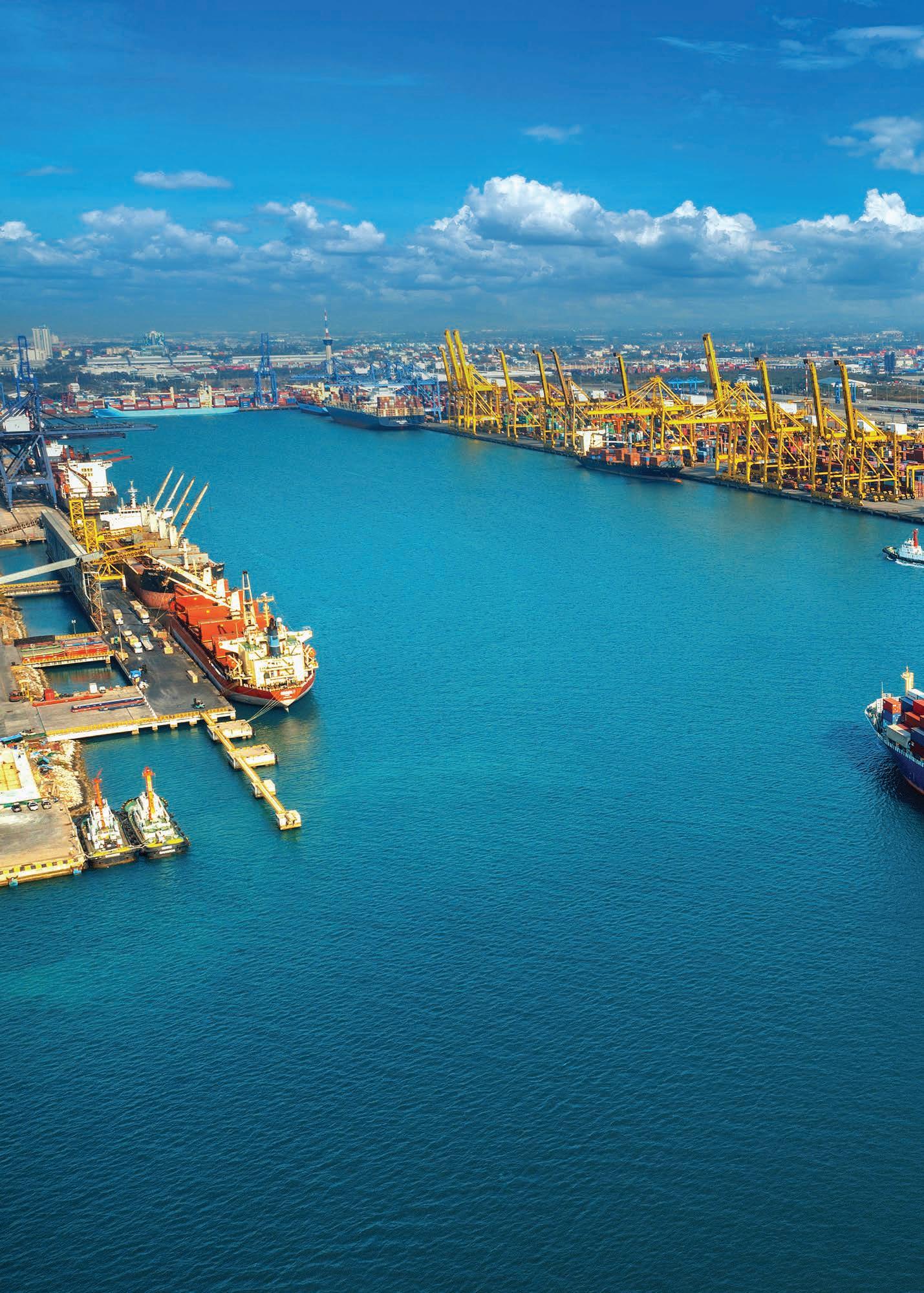
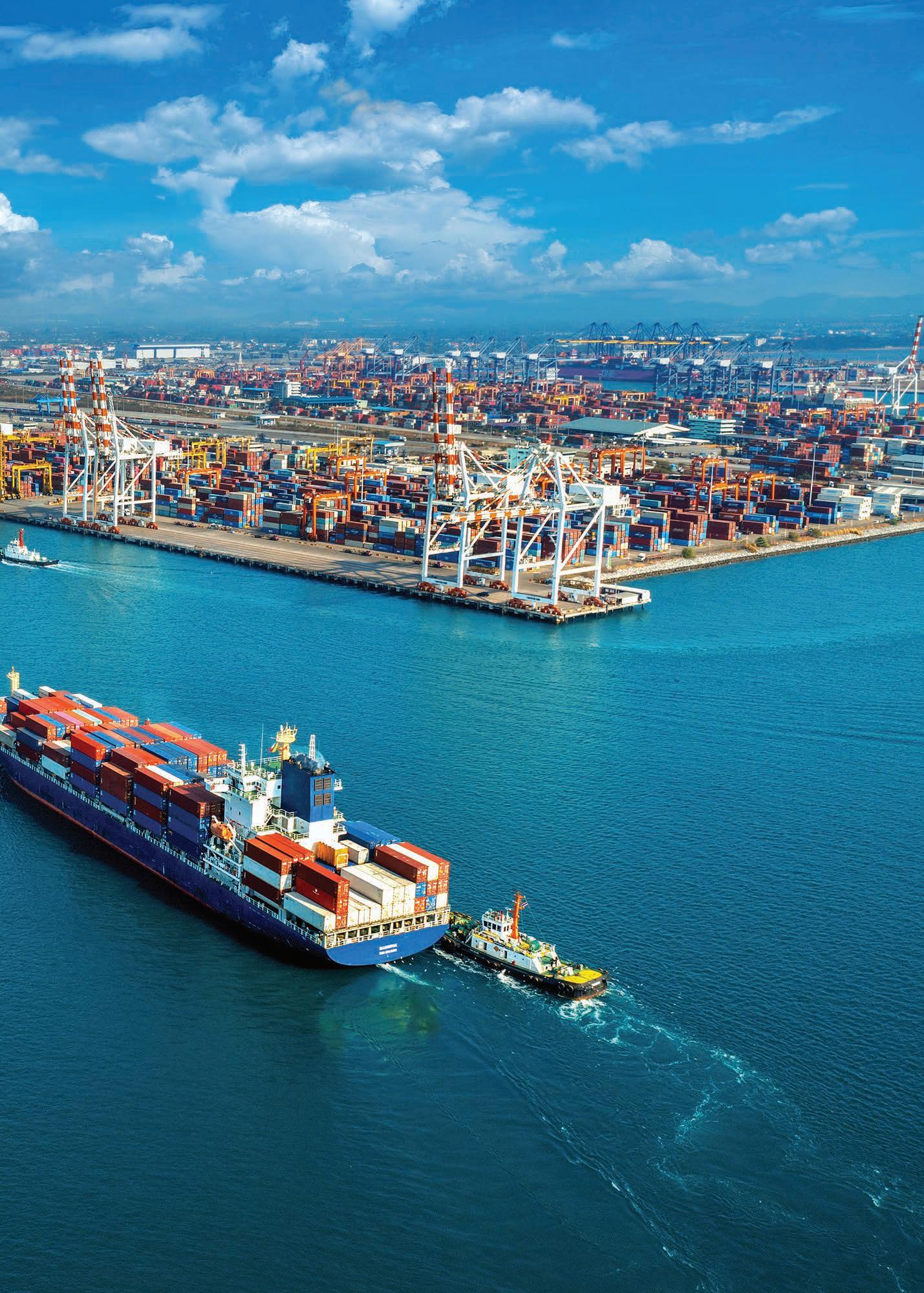 Director
Director


It seems an appropriate term to describe the state of global trade, finance, and supply chains as we enter 2023.
There is a growing sense of uncertainty and instability worldwide, and decision-makers are left wondering if this hazy state of affairs is here to stay.
The start of the year is often a time for reflection, setting resolutions and taking a forwardlooking view of the months ahead. Mirroring my personal aspiration for a ‘damp’ January, the outlook for trade also appears somewhat damp (rather than dry January, I have opted for a reduction, rather than a full withdrawal of alcohol consumption this month).
Predictions for 2023 hint towards a looming global recession, with inflation rates at their highest levels since the 1980s and the geopolitical situation remaining tense, spurred by the destructive escalation of Putin’s lingering invasion of Ukraine. While many areas of the world must come to grips with precarious future outlooks, others seem poised to flourish. Experts are predicting higher than
average growth rates for trade in some parts of Africa, thanks to debt restructurings, multilateral support and resilient commodity prices.
On the heels of interviews with industry leaders and experts, this latest issue of Trade Finance Talks Magazine offers an inside scoop into the current state of trade affairs.
Our featured section is intertwined with predictions and discussions on the impact of China commodity flows, how shippers and carriers are navigating unpredictability and IMO regulations in 2023...

We then move into the sea with a focus on the megatrends hitting the shipping, freight, and port operator community. At this year’s Davos, there was a renewed focus on prioritising the Global Biodiversity Framework’s (GBF) 30x30 and making good out of WTO fisheries subsidies, plastic pollution, and the oceanclimate nexus.
But for trade and treasury, this new years resolution will be hard to achieve. Tracking and
DEEPESH PATEL Editorial
Trade Finance Global
CARTER HOFFMAN Research Associate Trade Finance Global
Uncertainty in the high seas: how international trade can survive 2023
1.1
‘Permacrisis’ was crowned word of the year by the editors of the Collins English Dictionary at the end of 2022, defined as “an extended period of instability and insecurity”.
reporting on scope 3 emissions is a hugely complex task, forcing technological advancements across supply chains.

Despite the seemingly unending new years resolution list, there are silver linings to be found across the trade space - particularly regarding the advancement of technology.
Policymakers in several countries have been making continued progress towards enacting MLETR-inspired legislation, which will be a significant catalyst for further digital improvement in the industry.
As we navigate the tumultuous waters of global trade in 2023, it will be essential to keep an eye on these developments and their potential to bring stability to an already permacrisis state of affairs. All aboard!
Once again, we thank all of our sponsors, associations and partners for their support of Trade Finance Global.” as the last line of the foreword.
FOREWORD
2
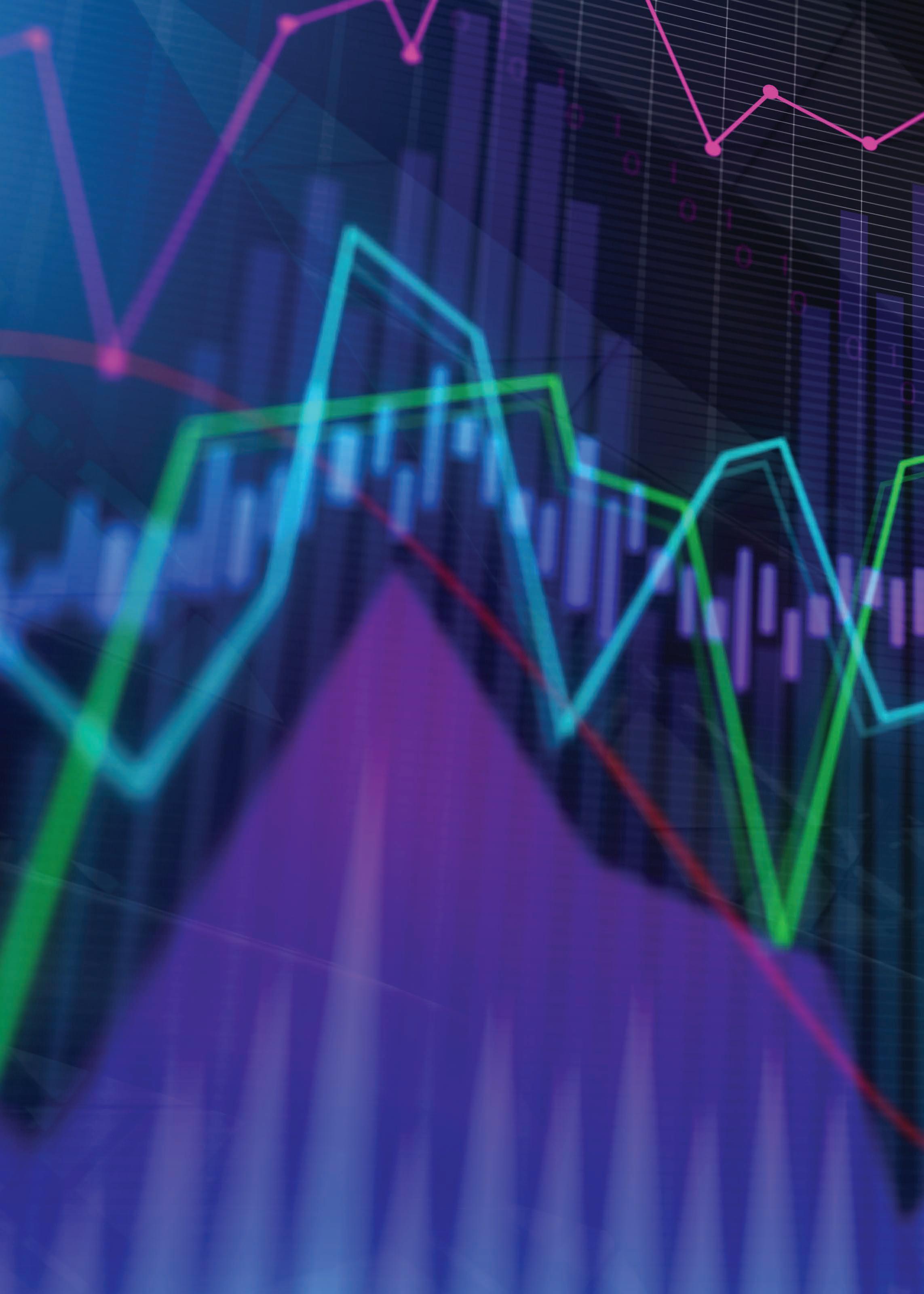
FEATURED

2.1
Trade volume, commodity and insurance predictions for 2023
To start 2023, TFG’s Brian Canup asked industry experts to provide their predictions on trade values, commodities performances and trade insurance.




After a tumultuous 2022, it is anyone’s guess what will happen in the coming year, but we are looking forward to another exciting year in the trade finance industry.
Will trade struggle in the face of persistent global inflation? How will commodities perform as China attempts to manage COVID-19? Will decreasing consumer confidence and demand impact global trade
numbers? Will economic uncertainty impact trade credit insurance?
TFG asked Francoise Huang (FH), senior economist for Asia Pacific and Trade at Allianz Trade, John Miller (JM), chief economic analyst at Trade Data Monitor, and Richard Wulff (RW), executive director at ICISA, to give their thoughts on the 2023 trade environment.

10 TRADE FINANCE TALKS www.tradefinanceglobal.com
BRIAN CANUP Editorial & Research Assistant Trade Finance Global
FRANÇOISE HUANG Senior economist for Asia Pacific Allianz Trade
JOHN MILLER Chief Economic Analyst Trade Data Monitor
RICHARD WULFF Executive Director ICISA
BC: What are your predictions for global trade trends in 2023?
FH: Global trade continues to slow as industrial activity recedes, despite the easing of supplyside constraints. Oversupply in the manufacturing sector has worsened since Q3 2022, notably in Europe. New orders and backlogs of work are at their lowest level since the pandemic in 2020.
Hence the manufacturing sector is expected to remain in recession in 2023 due to lower demand, mainly for consumerdriven industries, and a more pronounced destocking process from corporates in sectors where oversupply is highest. The largest
cliff-edge is expected in cyclical sectors such as construction, consumer goods (electronics, household equipment etc.) and retail.
Supply chains should continue to normalise, supported by slowing demand and China’s progressive reopening. A manufacturing recession along with the continued slow recovery of services trade and a correction in price pressures mean that we expect global trade in goods and services to grow by only +0.7% in volume terms in 2023 and to contract by -1.3% in value terms (to $29.5 trillion).
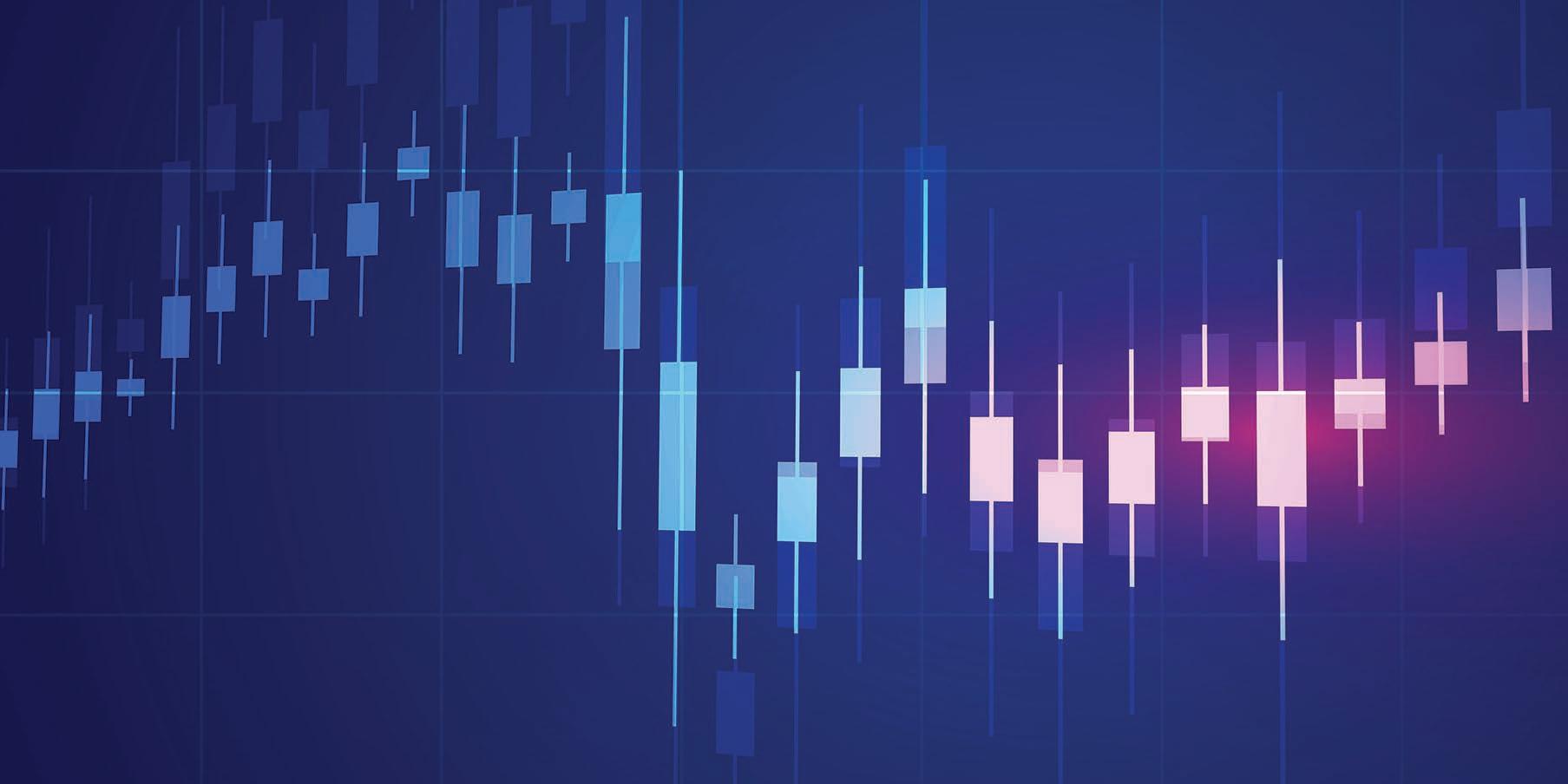
A mild recovery should be possible in 2024, with global trade in goods and services growing
by +3.6% in volume terms (i.e. roughly 1pp below the prepandemic long-term average) and a neutral price effect resulting from opposing sectoral trends.
Beyond the cyclical developments, trade and industrial policies will remain topical over the coming years.
Policymakers across the world seem focused on taking action to secure supply chains. Not all trade participants will be hindered by such protectionist measures, but global trade may be heading towards lower growth rates in the coming years compared to the pre-pandemic long-term average.
11 www.tradefinanceglobal.com
FEATURED
JM: In 2023, global trade growth will slow to 1%, according to the World Trade Organization, because of inflation, higher interest rates, weaker demand in the U.S. and Europe, protectionism, and a levelling-out after recovery from COVID-19.
Energy will dominate the global commodities market. Russian oil and gas is flowing to China, India and Turkey instead of Europe, which is discovering its appetite for U.S. liquid natural gas from Texas and Appalachian fracking wells.
China is losing export markets in favour of its domestic economy, but gaining traction in key sectors like automotive, pharmaceuticals and petroleum products.
As China loses some steam, its appetite for iron ore, nickel, copper and other industrial metals is slackening, and supply chains are migrating toward other big Asian economies like Vietnam, Malaysia and Singapore.

Boosted by domestic subsidies and spooked by rising geopolitical risk (which has led to import tariffs
and export controls on computer chips and other strategic goods, and other forms of protectionism), companies are manufacturing closer to home. This nearshoring trend is especially prevalent in the U.S., where trade is increasingly unpopular.



Optimism for 2023
BC: What are the positive outlooks for 2023 trade?
JM: On the bright side, trade in electric vehicles, solar panels, windmills, and batteries and their ingredients is thriving. More businesses from Asia, Latin America and Africa are participating in global trade, and ports, canals, highways and rail lines continue to prove that global supply chains are robust, annually
delivering over $30 trillion worth of goods.
Outlook for trade insurance in the new year
BC: What will the trade credit insurance environment look like in 2023 for bank and corporate users?

RW: After the pandemic, we had hoped for a recovery of the economic environment. However,
2022 was another tumultuous year, which increased the complexity and uncertainty for businesses all around the world. This will probably be reflected in the trade credit insurance business, with more companies looking for options to mitigate risk and support development. There are clear signs that this is leading to a higher demand for our products.
BC: Will 2023 see more insolvencies and defaults than previous years?
RW: Currently, with biggest credit insurers predicting an increase in insolvencies and claims, insurers will be paying close attention to risk quality.
At present, the EU is carrying out a review to ensure that credit insurance continues to receive appropriate recognition as a vital source of risk mitigation. This is an important component to
ensuring liquidity in the economy whilst spreading risk among well capitalised and regulated entities, as both the banking and insurance sector are.
During this review, we have seen a continuation of the trend of increased demand for trade credit insurance acquired by financial institutions, for both single names and baskets of risk. The economic environment notwithstanding, we are confident of continued development of business relationships between
the banking and credit insurance sectors to the benefit of the economies that we all help to support.
14 TRADE FINANCE TALKS www.tradefinanceglobal.com
ROBERT BESSELING CEO Pangea-Risk

2.2
African trade encouraged by improved 2023 country risk outlooks
PANGEA-RISK CEO Robert Besseling anticipates some positive risk trends in Africa in 2023. Indeed, African economies will exceed global growth averages on the back of resilient commodity prices.

Distressed debt will be treated to avoid chaotic default scenarios, while more foreign investment will return as diverse investors seek higher yield. Moreover, maturing democratic systems ensure that socio-economic grievances will increasingly be aired in the political arena, i.e., at elections, rather than on the street.
In 2023, most countries in Africa will see economic growth well above the global average rate, thus reverting to more optimistic pre-pandemic trends, at least relative to the rest of the world. Buoyant or resilient commodity prices, continued external
Improved economic outlook
support from multilaterals, and – in some cases – managed debt restructurings will underpin the economic recovery of countries still suffering the longterm impact of the COVID-19 pandemic.
External risks persist, including the effects of the war in Ukraine, a resumption of travel restrictions due to the pandemic, continued disruption to trade and global supply chains, and the lagged peaking of inflation rates in emerging markets. But overall, African countries should see an improved economic outlook for 2023.
15 www.tradefinanceglobal.com
FEATURED
Despite slowing demand globally, commodity prices will remain high in 2023. After a dip in late 2022, oil prices are expected to average above USD 80 per barrel this year, which is good news for nascent producers in Africa. Perhaps worryingly, some of Africa’s largest oil producers will fail to benefit from higher prices as output continues to drop in Angola, Republic of Congo, and Equatorial Guinea. Yet, Nigeria’s efforts to curb crude oil theft may be reversing a long-time downward export trend. Meanwhile, new fossil fuel projects in East and West Africa are more likely to be signed off as long-term gas and oil prices
remain high. Mozambique, Senegal, Mauritania, and Guinea will start natural gas exports in 2023, while Tanzania may see a long-anticipated final investment decision on gas projects. Investment commitments on major oil and gas infrastructure, including pipelines and East and West Africa, should also be expected this year.
Metals prices will remain volatile, but a floor under base metal prices will be kept in 2023. Gold started the new year with prices at a six-month incline and analysts believe the rally has further to go in 2023. This is good news for major producers
Debt restructuring to avoid default
At its autumn 2022 meetings, the IMF did not add any countries to its list of debt distressed countries, or those at risk of falling into debt distress. That will probably change at the April 2023 meetings jointly held by the Fund and World Bank – expect
more African countries to make the debt distress shortlist. SubSaharan African long-term loans have more than doubled to $636 billion in the decade to 2021 — that exceeds the combined gross domestic product (GDP) of more than 40 African nations. Given
Tanzania, Ghana, and South Africa, although divestments are ongoing in Mali and Burkina Faso due to insecurity and reputational risks. Major producers of fourth industrial revolution metals such as DRC will see concrete benefit to their economies as demand for components remains scarce globally.
the elevated debt levels, African governments are allocating a larger share of their revenues to servicing external debt. The compounding effects of high debt service costs along with a domestic currency depreciation have increased exchange rate

16 TRADE FINANCE TALKS www.tradefinanceglobal.com
risks for countries with high external debt. Eurobonds and Chinese loans are at highest risk of default - African nations owe China about $84 billion, by conservative estimates.
The World Bank says that support for international debt restructuring might be required. Last year, Pangea-Risk accurately assessed that at least six African countries would restructure their debt, namely Kenya,
Nigeria, Ghana, Chad, Ethiopia, and Zambia. All six countries have since commenced some form of domestic or external debt treatment, while Chad has completed its external loan reprofiling – at least for now. This may be a positive development, as multilaterally coordinated and well-managed debt treatments are more likely to avoid chaotic defaults such as those in Mozambique in 2016 and Zambia in 2021. A calibrated
Elections to mitigate unrest risks
Some 16 African countries are scheduled to hold elections over the coming year. In 2023, several hotly anticipated votes are taking place in the backdrop to rising costs of living, tight fiscal regimes, and broader insecurity. Some of these elections may trigger political instability and, potentially, unrest. In fact, we have identified more than ten countries where upcoming elections may drive insecurity that should be monitored over the course of this year. Meanwhile, preparations for about 13 more elections in Africa

in 2024 alone will also drive similar risks of political instability, civil unrest, and policy uncertainty this year.
However, elections should not always be interpreted as a “risk”, which is a common perception by country risk analysts. Indeed, notable polls in 2022, including in Angola and Kenya, portray an increasingly steady political climate and a democratically mature trend developing on the African continent, which will set the tone for upcoming votes in 2023. Elections increasingly
debt reprofiling in Angola and Republic of Congo have turned around these countries’ economies and rendered their debt to more sustainable and affordable levels. Eurobond holders and commercial creditors may fear significant haircuts on African obligations, but without restructuring, more debt is more likely to default and trigger a wider financial crisis.
offer a chance for electorates aggravated by inflation, debt, and other grievances to vote out incumbents and seek political renewal, thus avoiding broader instability. Country risk analysts too often warn of elections as indicators of insecurity and political instability, which is generally a fair assessment. But let’s not forget the opportunity that elections hold for both local electorates and foreign investors. Elections can and do often mitigate political risk, rather than drive it.
17 www.tradefinanceglobal.com
FEATURED
PRADEEP TANEJA Founder & CEO Taneja

13 common Letter of Credit and Bill of Lading frauds: Learning from the Solo Industries and Saad Group fraud cases
At the IIBLP’s Dubai Trade Law & Compliance Conference held in Dubai on 15 March 2022, one of the panellists referred to the Solo Industries fraud in a panel discussion addressing the recent Singapore case, Credit Agricole Corporate & Investment Bank (CACIB), Singapore branch v. PPT Energy Trading Co.
The reference to Solo Industries took me down memory lane when I was heading trade finance operations of a bank in Dubai in the mid-1990s and was receiving several high value LCs in favour of Solo Industries issued by my bank’s correspondent banks and its overseas branches in India, Europe, and USA.
“This article originally appeared in the July/August 2022 edition of Documentary Credit World (doccreditworld.com).”
In this case, the Singapore Court ruled that “fraud can only, by definition, encompass a beneficiary who acts dishonestly, in presenting otherwise facially compliant documents either with the knowledge that what is contained therein is false, or without belief that what is contained therein is true.” The Court determined that CACIB, as an issuing bank, could have defence to the claim under the Letters of Credit (LCs) only if it could prove that the beneficiary (PPT) was a party in the scheme to defraud CACIB which its own client, the Applicant (Zenrock Commodities Trading Pte Ltd.) had perpetrated.
My bank’s role was to simply act as an advising bank and since the LCs were “freely negotiable” (a term used in UCP500) and were not required to be confirmed, no documents under the LCs were ever presented to us. Wondering as to the disposition of the documents and sensing a possible discounting opportunity from Solo Industries, I called Madhav Patel, Director of Solo Industries, requesting him to route some business through my bank. He simply replied, “not interested”.
It seemed that he was getting far better pricing from other banks in Dubai than what he thought my bank could possibly quote at the time in 1995.
18 TRADE FINANCE TALKS www.tradefinanceglobal.com
2.3
Global Trade Consulting WLL
Those who forget the lessons of history are condemned to repeat them. Trade finance frauds are no exception.
I could certainly match or improve on his pricing expectation, but I had a strange hunch to drop the discussions. It was as if my intuition was telling me that something was not quite right which my rational mind could not yet explain. A few days later, Patel came down to my bank to see me. Having built his reputation over 20 years, Patel was quite well known in Dubai banking circles and was considered a highly respected, sought after businessman among the trade finance banks. For instance, I was told that an AED 100m (USD 27.2m) facility was approved for Solo Industries by one bank in Dubai in less than a week. This would be my first and last meeting with Patel.
We exchanged business cards (I still have his as memorabilia). He looked suave, well-mannered, and sophisticated in his soft and gentle speaking style. At the time, no one thought in their wildest imagination that Madhav Patel’s company was presenting fake or falsified documents covering non- existent cargoes under LCs and that the company was perpetrating massive multihundred million dollar LC frauds which would eventually cause unprecedented losses to banks and cost several corporate bankers and relationship managers their jobs.
In the UAE alone, 26 banks lost close to USD 500m and a few other banks in the Gulf region, Europe, and Far East collectively losing another few hundreds of millions of US dollars. Such was the extent of the fraud that one multinational bank delayed its 1999 balance sheet that year to reflect and book its losses arising from the frauds. Another multinational bank decided to
exit from the Gulf region. One branch of a bank in the Middle East reportedly lost an amount exceeding its local country capital brought in to support its UAE operations.
Patel became UAE’s most wanted criminal and was also wanted by Interpol and police in India, Bahrain, France, Switzerland, Belgium, and UK. By 1999 after I had already moved to Bahrain, I read in local newspapers about the Solo Industries fraud and realised how true my hunch was. I was lucky. But did banks in the region learn their lesson?
To avert recurrences of financing fraudulent trade finance transactions, most banks in the region took membership of International Maritime Bureau (IMB) to avail its “trade finance documents authentication” service and implemented, as a preventive measure, a policy of making checks on bills of lading

(B/Ls) with IMB before financing transactions. Prior to 1999, most banks in the region were not even aware that IMB existed or that it provided a service of checking authenticity of B/Ls.
This measure made sense as it provided comfort to discounting banks in the light of the judgement in Banco Santander SA v. Banque Paribas in which an English Court of Appeal affirmed that an issuing bank could refuse payment under the fraud exception in case of deferred payment credits if the issuing bank came to know of fraud prior to maturity. This would not, according to the Court, hold true in case of acceptance credits in which a bill of exchange was presented and duly accepted or where the proceeds were assigned to the discounting bank with the assignment notice having been duly acknowledged by the issuing bank.
19 www.tradefinanceglobal.com
FEATURED
As a fallout of the Banco Santander case, some banks in the Middle East started issuing LCs on deferred payment terms but when it came to adding confirmations, they insisted on acceptance credits, believing that they would be protected if a fraud occurred and the matter went to court.
Was the Solo Industries fraud saga over and rendered “a thing of the past” after banks started checking on B/Ls? Far from it. Solo Industries, dubbed “the fraud of the decade”, was only a precursor to a larger scheme of trade finance frauds in the years to come.
Fraud unravels all. Fraudsters know that if they present complying documents to banks under LCs, they could walk away with a hefty amount of money even if they never ship cargo. The LC mechanism is vulnerable to abuse, not only for frauds but also for violation of foreign exchange

controls and regulations, illegal capital flight, trade-based money laundering, and other financial crimes. Each day, banks take in hundreds of millions of US dollars’ worth of payments based on documents. But documents can be forged.
The complexity and scale of trade finance frauds, corporate failures with huge outstanding debts, and substantial bank losses over the years has grown disproportionately. In the case of Solo Industries, the largest amount lost by a single bank was around USD 25m to 30m, but in case of the 2009 multi-billiondollar collapse of Saad Group, some banks lost in the range of USD 500m. Saad Group was controlled by Maan Al-Sanea, a Saudi Arabian billionaire who owned over 3% of shares in HSBC. Just like Patel, he was a highly respected businessman in banking circles.
A majority of the fraudulent transactions of Saad Group were under LCs issued by Bahrainbased Awal Bank, a subsidiary of Saad Group and The International Banking Corporation (TIBC), Bahrain in which Al-Sanea was a managing director. TIBC was controlled by Ahmad Hamad Al-Gosaibi & Brothers (AHAB) and Al-Sanea was married into the AlGosaibi family.
Both Awal Bank and TIBC were placed under moratorium by the Central Bank of Bahrain (CBB) in 2009 for their failure in settling their obligations towards creditors including local and international financial institutions. Preliminary investigations revealed that there were numerous violations of CBB regulations in the management of Awal Bank which constituted deception, breach of trust, embezzlement and money laundering, as reportedly advised by CBB in written communication to Bahrain’s Attorney General (Public Prosecution). By some estimates, the total amount involved in Saad Group together with Ahmad Hamad Al-Gosaibi & Brothers (AHAB) exceeded a massive USD 125b.
While some banks were still reeling from the Saad Group frauds, the failure of New Medical Centre in UAE in 2020 left certain banks with a staggering outstanding debt of USD 6.6b. Meanwhile Singapore-based banks suffered losses of around USD 9b in commodity trade finance transactions which led the likes of ABN AMRO, SocGen, BNP Paribas, and others to either exit or curtail their commodity trade finance business.
How can banks better position themselves to avert fraudulent
20 TRADE FINANCE TALKS www.tradefinanceglobal.com
trade finance transactions? One industry report suggested that heightened alertness on the part of operational staff could avert several fraudulent transactions. For instance, in one case, the B/L presented to a bank showed shipment by several containers which were all sequentially numbered. The report advised that the sequential numbering of containers is an impossibility and should have been detected by the bank concerned.
At the request of a Bahraini law firm in 2009, I reviewed 17 LC transactions worth over USD 65m in a multinational bank’s Bahrain branch which were issued on behalf of a Saad Group company in Al Khobar, Saudi Arabia. While reviewing, I realised that if trade finance operations/relationship managers had exercised a bit of caution or diligence, banks could have stopped the fraudulent transactions.
For example, a local LC was issued for USD 5m by a bank for delivery of marble slabs from beneficiary’s warehouse to applicant’s warehouse within Al Khobar. In five days, another LC for USD 4m was issued for the same applicant in favour of the same beneficiary for supply of the same product. In both cases, documents including delivery notes were presented on the next banking day following issuance of the LCs. The transactions were financed under a trust receipt facility for Saad Group.
Had the trade operations manager considered these transactions, he would have realised that it was not practically feasible to deliver a USD 5m cargo of marble slabs within a day. Another question that would come to mind is whether
the beneficiary would maintain such a large warehouse in the small city of Al Khobar in which he had possibly imported and stocked marble slabs worth USD 9m for local sale? Presumably, the applicant also maintained an equally large warehouse to receive the cargoes. Even if it was, the sheer logistics involved in delivery would not be so simple. It would take a number of days and a number of trucks to complete that kind of delivery; surely not one day or one truck. The delivery note presented contained two notations “delivered” and “received” and was signed by the authorised representatives of beneficiary and applicant, respectively.
Another obvious red flag: The relationship manager of Saad Group advised the trade operations of the bank to charge a 2% flat fee on the LCs as commission! These LCs were sight LCs with three months’ validity. Annualised, a 2% commission rate
translates to an unprecedented LC issuance fee of 8% per annum. In over 40 years of trade finance banking experience, I have never had an applicant agree to that kind of commission fee on an LC. If the Saad Group agreed to pay, it was only to raise financing from the bank with full knowledge that it was not going to repay. And it didn’t. The matter went to court.
In my experience, for large value LCs, applicants in the Gulf region are known to negotiate with their bankers for better pricing. A fee of 1% per annum for large value transactions is seemingly high to them, not to mention 8%.
In the Solo Industries situation, various documents presented under LCs covered non-existent cargoes. The company also deployed several techniques to misrepresent and defraud bankers. In one instance, Solo Industries made a genuine shipment of lead ingots for USD 30,000 but raised four invoices for
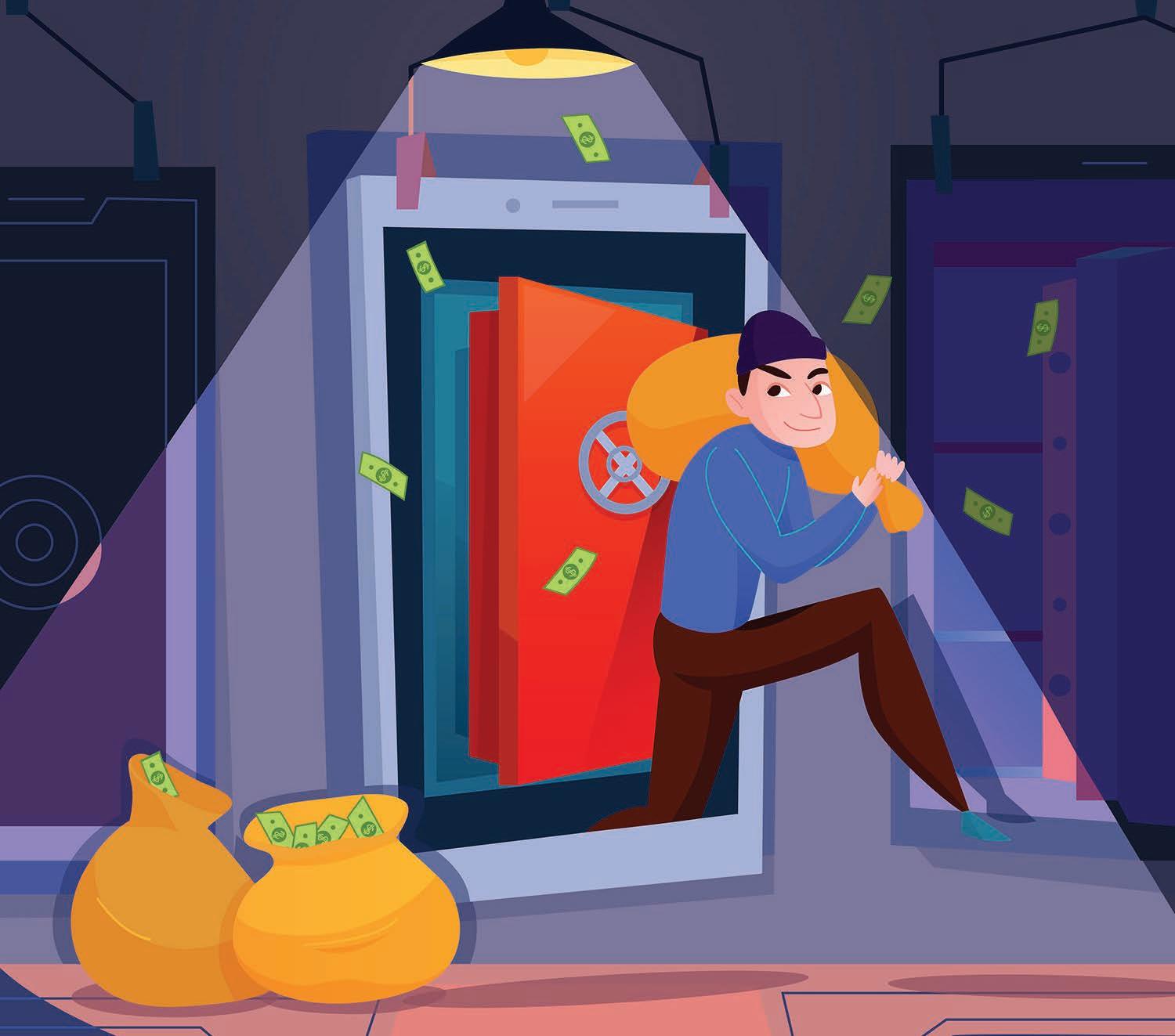
21 www.tradefinanceglobal.com
FEATURED
USD 100,000 each (a case of overinvoicing and multiple invoicing) indicating shipment of lead silver alloy (a case of false description of goods) and presented under four different LCs to four unique banks, each unaware that similar documents were presented to other banks. The applicants of the LCs were associate companies of Solo Industries and the nonvessel owning common carriers (NVOCCs) which issued the bills of lading were controlled by Solo Industries.
Years later in a 2006 report on Trade Based Money Laundering, the Financial Action Task Force (FATF) recognised four basic techniques of trade based money laundering: (a) over- and underinvoicing; (b) multiple invoicing; (c) over- and under-shipping; and (d) falsely described goods and services. In its illicit business dealings, Solo Industries had already relied on all these tactics to the hilt.
With the help of IMB, many banks, including mine, managed to detect and stop several fraudulent trade finance transactions. In 2012 after the Arab Spring and assassination of Libyan leader Gaddafi, I came across several LCs issued by Libyan banks for USD hundreds of millions which were designed to extract foreign exchange from Libya (a case of illegal flight of capital) using the LC mechanism without real shipments. Within a span of a few months, I identified and stopped dozens of LC transactions worth over USD 200m.
Two such LCs totaling USD 52m were received in favour of a littleknown general trading company in Sharjah, UAE, covering shipment of Toyota vehicles from
UAE to Libya. The transactions did not make any sense to me. The question that came to my mind was why the importer in Libya was not buying directly from Toyota Motor Corporation or an authorised Toyota distributor in UAE?
The beneficiary wanted to discount one of the LCs but I was not convinced with the veracity of the transactions and asked my staff to check with IMB. As I had expected, IMB responded that shipments never took place and the B/Ls presented were fake. We filed a Suspicious Activity Report (SAR) with Bahraini regulators.
Can fraudsters circumvent IMB checks? Although it is not always the case that a suspicious transaction turns out to be fraudulent, if it does and the financing bank fails to report it, then, apart from financial losses, the consequences could be disastrous with regulatory penalties and reputational risk. With banks increasing their compliance checks, fraudsters
have become increasingly sophisticated and succeeded in dodging banks’ checks. There are several red flags to watch for, many of which are seen in contemporary cases in my practical experience. Some of the most common that have triggered Suspicious Activity Report (SAR) filings with the relevant regulators include:
1. Clone B/Ls
Presented B/Ls are replicas of originals except for names of the parties and LC number. An IMB check with the physical carrier may reveal that the B/Ls are falsified and that the carrier never issued the B/Ls presented. In some cases, fraudsters use sophisticated scanner technology to produce duplicate B/Ls which look as good as, or even better than, the originals.
2. Benchmark Amounts
Banks cannot possibly check every single B/L with IMB. Therefore, banks stipulate a minimum benchmark value amount above which all B/Ls

22 TRADE FINANCE TALKS www.tradefinanceglobal.com
will be checked. Some banks set their threshold at USD 500,000 and fraudsters know this. Some banks receive LCs for amounts just under benchmark amounts. I have seen LCs for USD 499,000.

3. Copies of B/Ls Presented Instead of Original B/Ls (as LC called for copy)
IMB checks have revealed that multiple copies are presented to multiple banks to raise multiple financing. As a prudent banker, if I received an LC request stipulating a B/L copy instead of an original, I would discreetly inquire with the applicant their reasons for requesting such a condition. I would issue such LC only if internal credit approvals were available and justifiable reasons were submitted by the client.
4. Letters of Indemnity (LOIs) instead of Original B/Ls
In oil LCs, it is quite common that LCs will call for Letters of Indemnity (LOIs) instead of original B/Ls if the beneficiary is an oil trader. If the applicant
is buying directly from the original source — the oil supplier or producer — I do not see a compelling reason why the LC should call for an LOI in lieu of the B/L. In Winson Oil Trading Company v. Standard Chartered Bank (SCB), a Singapore case for recovery of USD 30.5m covering shipment of diesel, Winson had sold to Hin Leong Trading Company under an LC issued by SCB, Singapore. SCB refused to pay under its LC, alleging fraud as the different LOIs showing different parties for same cargo were reportedly submitted to different banks.
5. B/Ls Presented by Third Parties Totally Unconnected with the Shipment
Although as per UCP600 subarticle 14(k) the shipper or consignor of the goods indicated on any document need not be the beneficiary of the credit, precaution to check with IMB, especially in large-value transactions, always helps and may prevent fraud.
6. Charter Party B/L Signed by an Unathorised Signatory
In some cases, a charter party B/L may be signed by an entity which was not authorised by the charterers to sign. In one instance, I was able to detect this with the help of IMB.
7. High-Value LCs Covering Goods Outside a Trader’s Business Norms
For instance, I have seen multimillion USD LCs covering a shipment of “armoured vehicles’’ by a Dubai- based general trading company that deals with electronic goods, mobile phones, and toys. We refused to even advise the LCs.
8. NVOCC B/Ls
In one situation I recall, a container was loaded on a Libya-bound vessel by a freight forwarder through a reputed shipping company in Dubai which issued the house B/L (HBL). The B/L issued by the NVOCC indicated shipment of HP computers and accessories as per LC, but as I had internally caution-listed the NVOCC based on a previous bad experience, I called the HBL issuer and learned in strict confidentiality that an “Infinity car” was shipped instead of computers.
9. Local or Inland Shipments
As fraudsters are aware that banks check B/Ls through IMB, they are known to circumvent such checks by using inland transport documents (truck waybills) which are not covered by IMB’s “trade finance documents authentication” service. As truck waybills do not provide title to goods in GCC countries, banks should
23 www.tradefinanceglobal.com
FEATURED
be considering issuance of LCs calling for truck waybills with care and precaution and establish whether the use of a truck waybill is practical and viable. In my experience, with the exception of shipment of plant and machinery or capital equipment by a truck, any document for an amount above USD 0.5m for a single shipment should be questioned by a banker. But surely, a document for USD 3.5m accompanied by a truck waybill covering shipment from Dubai to Abu Dhabi in one truck on a single day is improbable. Member banks of the ICC Bahrain Trade Finance Forum are accustomed to ensuring that specific approvals are in place before issuing local LCs.
10. Price Checks
To lure applicants into a trade deal, fraudsters will offer a price just below fair market value of the goods. Three banks in Bahrain issued LCs in favour of a beneficiary registered in Netherland Antilles who maintained an account with a bank in Vienna. Complying documents covering shipment of “light weight aerated blocks” by truck from Kuwait to Bahrain at a price just below market price were presented but the importers became suspicious as they never received the cargo. When asked, the Kuwaiti trucking company revealed that they never issued the transport documents. As all three banks are members of the ICC Bahrain Trade Finance Forum, I suggested they do not pay. Later, we worked closely with the importers to seek injunctions from a Bahraini court restraining the issuing banks from effecting payments. We decided to disclose the fraud information to the presenting bank in Austria
which, fortunately, supported the Bahraini banks as it did not want to be a party to fraudulent transactions.
11. Atypical Goods
There are instances when goods requested under an LC are not as per the applicant’s known business line. I have refused several such LCs. Some examples: A pharmaceutical company requesting an LC for import of marble slabs from India to UK; an IT company receiving an export LC for import of clothing; a textiles trader requesting an LC for import of onions. That an LC applicant should be known to be dealing with the goods purportedly to be imported under the LC was included as a checkpoint in an advisory released by the regulators in Bahrain under Money Laundering Regulation Act when it was first promulgated in Bahrain.
12. Shipments that Make No Economic Sense
I strongly feel that trade finance bankers should review the LC structure to ascertain whether there is reasonable commercial sense in the underlying transaction, otherwise there could possibly be a fraud. In one situation, I had cautioned a bank about an LC request for USD 4m in favour of a Singapore-based beneficiary who presumably maintained stocks of ingredients for medicines in a highly sophisticated air-conditioned warehouse in perfect hygienic conditions as per Health Ministry guidelines in Dubai for shipment to Abu Dhabi by truck. The company went bust in just two years with USD multi-hundred millions of outstanding debts to its bankers.
13. Exceptionally Large Value LCs
An exporting company with an average size of shipment of USD 100,000 received an LC for USD 9m from a bank in Libya. Due diligence revealed that the scale of exporter’s business operations in UAE was inconsistent with the size of the LC.
I could share additional experiences and instances that I have encountered in my trade finance banking career. It can be never ending. However, I earnestly hope that some of the instances of red flags that I have described would assist some trade finance bankers to be able to detect and stop a fraudulent transaction. If it does even in one case, this purpose has been worthwhile.
TFG would like to thank Documentary Credit World (DCW) and the Institute of International Banking Law & Practice (IIBLP) for their cooperation and partnership with this article.
24 TRADE FINANCE TALKS www.tradefinanceglobal.com
2.4
How
to use Incoterms® proficiently: risk, responsibility, and transfer operations
A typical contract for export/ import is based on the Incoterms ® rules and the contracts that surround it.
This covers:
The obligation: which party organises the carriage and insurance of the goods, obtains shipping documents, customs clearance and export of import licences;
The risk: which party bears the risk in the event of loss or damage to the goods at any specific point within the international journey, and at what point the risk is transferred;
The costs: which party is responsible for which costs. For example, transport, packaging, loading or unloading costs, and checking or security-related costs.
The Incoterms® 2020 rules explain a set of the eleven most commonly used threeletter trade terms, e.g. “Costs of Insurance and Freight” (CIF),
“Delivered at Place” (DAP). They should always be accompanied by the year of the publication of the Incoterms referred to, and, most importantly, the precise place of delivery.
All Incoterms® other than Delivered at Place (DAP), Delivered at Place Unloaded (DPU)––a 2020 update to Delivered at Terminal and Delivered Duty Paid (DDP), are likely to subject the importing company to port and terminal handling charges at deep sea ports. Additional fees may include; handling and storage fees at the airport even if the exporter has paid for freight charges.
The term Ex Works (EXW) may imply a lower cost price, but it can present importers with a hurdle of challenges when booking freight-forwarding and shipping in unfamiliar territory, requiring the buyer to arrange both export and import clearance.
Proficient importers may prefer to encourage the term Free Carrier–Shipper’s Address (FCA), in which the seller has a higher level of

25 www.tradefinanceglobal.com
Business-to-business transport and delivery practices are governed by Incoterms ®, published by the International Chamber of Commerce (ICC).
FEATURED
HOLLY O’LEARY Director Alinea Customs
responsibility, but transportation obligations and risk end at the origin.

When moving goods under the FCA Incoterm®, the seller will be responsible for loading the goods, obtaining a despatch document and also for the export declaration––but not the transit documents if the goods are entering third countries prior to reaching their destination––particularly relevant for road freight.
A benefit for UK exporters that adopt FCA Incoterms rather than EXW, is ready access to the proofof-export documents required to support zero-rated import VAT charged to overseas buyers. Proof of export documents is a legal obligation to hold on file, used for supporting a claim to zero-rate overseas VAT. Simultaneously, buyers benefit from increased customs accuracy, as the exporter will have also had to have completed much of the same information required for import.
Free on board (FOB) is a frequently misused Incoterm® that should only be applied for non-containerised waterway transport.
In actuality, it is widely applied to containerised and air cargo. Its misuse may represent a higher level of risk for the seller, particularly the period between delivering the cargo to the harbour or airport and the cargo being transferred to the ship or the aeroplane by a crew external to the seller.
Incoterms to look out for CIF and CIP
Cost of Insurance and Freight (CIF) implies a minimum insurance cover complying with Institute Cargo Clauses (C).
In this Incoterm, the seller covers the costs of transportation to the destination; however, the risk of loss or damage to the goods transfers when the goods are on board the vessel.
It is possible that carriage may be transferred through several carriers for different legs of the sea journey. For example, first, by a carrier operating a feeder vessel from Hong Kong to Shanghai, then on to an ocean vessel from Shanghai to Southampton.
The question arises here whether the risk transfers from seller to buyer in Hong Kong or in Shanghai: in other words, where does delivery take place? The parties would be advised to determine this in the sale contract itself.
Where there is no agreement, Incoterms® 2020 states the default position is that the risk transfers when the goods have been delivered to the first carrier (i.e., Hong Kong), increasing the period during which the buyer incurs the risk of loss or damage.
Should the parties wish the risk to transfer at a later stage, they should specify this in the contract of sale.
The CIF rule is to be used only for sea or inland waterway transport; when more than one mode of transport is used, which is common when transporting containerised cargo, it is advisable to use Carriage and Insurance Paid To (CIP) rather than CIF.
Under CIP a default level of insurance cover must be provided under Institute Cargo Clauses (A). The insurance shall cover, at a minimum, the price provided in the contract plus 10% (i.e. 110%) and shall be in the currency of the contract.
26 TRADE FINANCE TALKS www.tradefinanceglobal.com
DDP
Another term to be used subject to careful consideration is “Delivered Duty Paid” (DDP), which may be the easiest to sell, but also may present as the most difficult to cost.
In situations where DDP is used, the exporting party must have established registered premises––and an Economic Operators Registration and Identification number (EORI) in the importing territory––or have confirmed a customs broker willing to act as an indirect representative in advance. Indirect representation will occur when a company that does not have a registered UK presence appoints a customs agent to act as their UK representative.
HMRC identify that “if an agent makes a customs declaration as an indirect representative of the principal, the agent and principal will be jointly liable for any
customs debt. HMRC may seek payment from either the agent or the principal.” (HM Revenue & Customs, 2016/2021).
Therefore indirect representation incurs a high level of risk to the importing customs agency as they are likely to have to pay a professional indemnity (PI) insurance premium for offering this type of service, as only direct representation––where the principal has sole liability for the customs debt, is covered in a standard PI policy.
Customs valuation compliance and DDP Incoterms
As DDP Incoterms present a higher likelihood for indirect representation to occur, the customs agency is likely to scrutinise the customs valuation methodology.
For low-value imports conducted on a business-to-consumer (B2C) basis on behalf of an established company, with a
readily auditable compliance trail––for example, reputable e-commerce companies where a sale for export is evident and the price list is visible on their website––this may not present an issue.

For international branch transfers of goods (i.e., when an international branch sends goods to a third-party logistics (3PL) warehouse), the customs broker is likely to conduct significant due diligence concerning the customs valuation method of the goods, as there is an increased potential for an underestimate of values to occur.
For one-off shipments, high-value goods, excise, and for companies new to trading with little or no trading history, it may prove challenging to locate a customs broker willing to act as an indirect representative/Importer of Record due to the increased potential of fraud.
When presented with the option of DDP Incoterms by an overseas seller, VAT-registered importers would be advised to suggest an alternative term such as “Delivered at Place,” (DAP) and register for a CDS account with access to a cash account to pay customs duty if liable directly to HMRC, and adopt use of postponed accounting (PVA). This is likely to result in a significantly lower invoiced price.
27 www.tradefinanceglobal.com
FEATURED
2.5
Updated digital trade rules: ITFA, URTEPO, and streamlining payment obligations


Santa came early this year to the International Trade and Forfaiting Association’s (ITFA) annual Christmas event.
Instead of toys and games, this year, ole Saint Nick brought something even more exciting for all the bankers and traders: a shiny new set of digital trade rules!
To learn more about this latest surprise under the tree, Trade Finance Global’s Deepesh Patel spoke with Geoff Wynne, partner and head of the Trade & Export Finance Group at Sullivan and Worcester.
URF 800 - time for an update to forfaiting rules?
In 2013, the ITFA and the International Chamber of Commerce (ICC) introduced the Uniform Rules for Forfaiting, known as URF 800.
The URF 800 governed the forfaiting market, covering the discounting of the promissory notes that exporters would acquire from importers.
Forfaiting solves cash flow problems by allowing the exporter to sell their medium and long-term accounts receivable to a buyer, usually a trade
finance institution or a bank, at a discounted price.
These promissory notes allow importers to delay payment on the goods they purchase for a period of time. The exporter can then sell this promissory note at a discount to a forfaiter, receiving payment now, rather than in the future.
In turn, these promissory notes can be resold on secondary markets.
In effect, the URF 800 creates the rights and obligations for parties in both the primary and secondary markets.
28 TRADE FINANCE TALKS www.tradefinanceglobal.com
GEOFFREY WYNNE Head of Trade & Export Finance Sullivan and Worcester
In 2013, when the URF 800 was first conceptualised, technology looked different than it does today.
Nearly a decade of digital advancement has created the need to reevaluate and redefine the rules governing these instruments.
Some other rules governing various aspects of the trade finance landscape were simply supplemented with a digital addendum - such as the UCP 600’s electronic counterpart, the eUCP in 2019. The UCP 600 and eUCP are the ICC’s set of rules that govern issuance and usage of Letters of Credit.

Such an approach suggests that digitalisation is considered a mere afterthought, a feature that does not reflect the needs of today’s increasingly digital–first world.
Wynne said, “ITFA took the view that, in fact, it would be better almost to revolutionise how you dealt with the transfer of a digital payment obligation by creating the uniform rules for transferable electronic payment obligations (URTEPO).”
“URF 800 will cover and continue to cover paper transactions, but as the world evolves, we’re getting to electronic digital payment obligations.
“When you want to transfer those digital payment obligations, you now have a set of rules that govern how those can be transferred.”
New rules for transferable electronic payment obligations
When
conducting international
commercial transactions, buyers and suppliers that move to a digital payment obligation now have a set of rules that deal with how that payment obligation can be transferred.
This follows the standard laid down by the URF 800 and reflects the fact that a commercial market will come into existence for electronic payment obligations in the same way as it has for paper payment obligations.
However, to be legally enforceable as rules, they need to be subject to a governing law. This requires a legal system that will recognise electronic promises, electronic signatures, and the digitalisation of promissory notes and bills of exchange.
In the UK, the Electronic Trade Documents Bill - which is expected to become an act sometime in early 2023, will provide all of these legal features. The URTEPO play a role in bringing about this wider digital ecosystem.
Wynne added, “It’s all part of facilitating a move into the digital trade world and complying with the laws as they come out that will recognise how you can create and then transfer the newly created digital promise.”
Read the rules!
The URTEPO can be used today if practitioners use electronic payment undertakings as part of ITFA’s digital negotiable instruments (DNI) initiative. Wynne said, “As of today, we’ve published rules. Read them. Use them. Build them into your contracts so you can have shorter, simpler contracts and move us further into the digital trade world.”
You can find the published set of rules here: ITFA’s URTEPO rules.
Special mention to Paul Coles, Chair of the ITFA Market Practice Committee / HSBC Bank plc (UK), Geoffrey Wynne, Sullivan & Worcester (UK) for Drafting, and ITFA Members: Ani Bulut, Vakifbank (Turkey), Doreen Fick, ABSA Bank Limited (South Africa), Duncan Friggieri, London Forfaiting Company Ltd (Malta), Izabela Czepirska, Komgo (UK), Lorna Pillow, London Forfaiting Company Ltd (Malta), Sean Edwards, SMBC Bank International plc (UK), Tat Yeen Yap, MonetaGo (Singapore), and Yemi Paul, HSBC Bank plc (UK).
29 www.tradefinanceglobal.com
FEATURED
LUCA CASTELLANI Legal Officer UNCITRAL

Think data, not documents: advancing MLETR in 2023

As we navigate through a tumultuous and uncertain start to the decade, the banking industry faces new challenges in 2023.
However, with these challenges come exciting opportunities to adopt new technologies and move towards digital and sustainable futures.
At the BAFT Europe Bank to Bank Forum, experts from across the industry have come together to discuss the future of banking and trade finance.
Among the items on the agenda is the role of the United Nations Commission on International Trade Law’s (UNCITRAL) Model Law on Electronic Transferable Records (MLETR) in supporting the regulatory environment for digital trade.
To learn more about UNCITRAL and the efforts to support the regulatory environment around
digital trade, Trade Finance Global (TFG) spoke with Luca Castellani.
The practical impact of MLETR on global trade
The MLETR was first introduced in 2017 to address the possibility of using electronic forms for transferable documents and instruments, such as bills of exchange, bills of lading, warehouse receipts, and promissory notes.
Castellani said, “MLETR came at the right time because it came just before the pandemic, and therefore, the need to complete the digitisation of trade documents became even more evident.”
30 TRADE FINANCE TALKS www.tradefinanceglobal.com
2.6
This has led to a transformative new vision of looking at traderelated information and data from a single source and sharing it with stakeholders - rather than the highly fragmented nature that the industry has traditionally employed.
Currently, seven jurisdictions have fully adopted MLETR, including key trading hubs such as Singapore. Additionally, several nationssuch as the USA and Germany - have adopted some MLETR provisions. Other countries, such as the UK, and France, currently have MLETR-inspired bills passing through their houses of parliament, or are planning on taking legislative action soon. The practical impact of MLETR can already be seen in some of the early adopting nations that have enabled electronic bills of lading, which can be presented and opposed to third parties. Such real-world examples demonstrate that solutions and use cases currently exist. Now, it is just a matter of putting together the business case, technology, and law to embrace transformation.
Challenges to, and approaches for facilitating digital trade regulation
MLETR finds itself in an interesting regulatory position when it comes to implementation in jurisdictions worldwide.
Castellani said, “MLETR comes as a development of prior UNCITRAL texts in this field, and these UNICTRAL texts have already been adopted in more than 100 states.” This means that the approach and the fundamental principles have already been thoroughly tested for regular transactions. With MLETR, their application is extended to electronic transferable records.
When it comes to such electronic records, there are still regulatory challenges that need to be addressed.
For instance, there is a degree of uncertainty around whether customs authorities will accept electronic bills of lading, or whether monetary authorities will acknowledge the capital requirements as being the same or less than those for paper bills of lading.
Overcoming these obstacles in many jurisdictions requires engagement with regulators across disciplines.
While adopting an overarching enabling law, such as the MLETR, is a crucial first step that policymakers can take to continue supporting trade digitalisation efforts, there is much more that they can do. For instance, they could address regulation, implement a common framework for trust services to
validate data quality across borders, and mandate public entities to accept the submission of information in electronic form.
Expected benefits from widespread MLETR adoption
Experts expect widespread MLETR adoption to bring about several significant advantages, such as reducing the environmental impact of trade paper, and increasing the speed of trade. The most prominent advantages, however, are likely to stem from a broader approach to reusing and analysing data.
This would lower compliance costs, ease access to credit for small businesses, allow monitoring supply and logistics chains in real time, and even help prevent documentary fraud. With so many benefits on the horizon and so many nations actively working to push through the enabling regulatory frameworks, there can be little doubt that the global trade world of tomorrow is looking increasingly more digital. The onus will soon be on practitioners and business leaders to ensure that their organisations are prepared to thrive in the new world.
When asked for advice to give banks or corporates looking to integrate digitalisation technologies into their trade and supply chain processes in 2023, Castellani said, “Just four words: think data, not documents. That’s all.”

31 www.tradefinanceglobal.com
FEATURED
SHIPPING AND LOGISTICS IN 2023
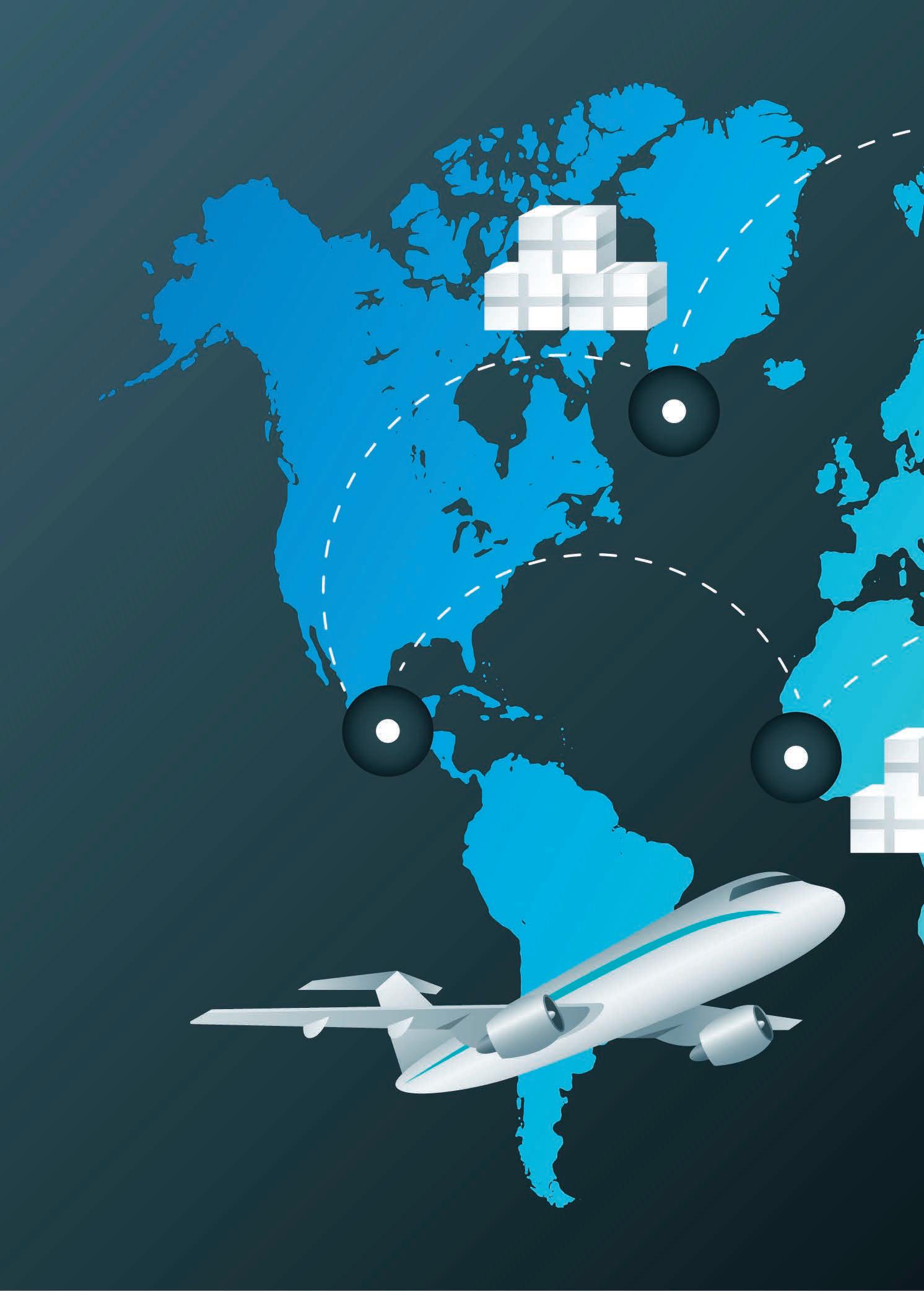
3
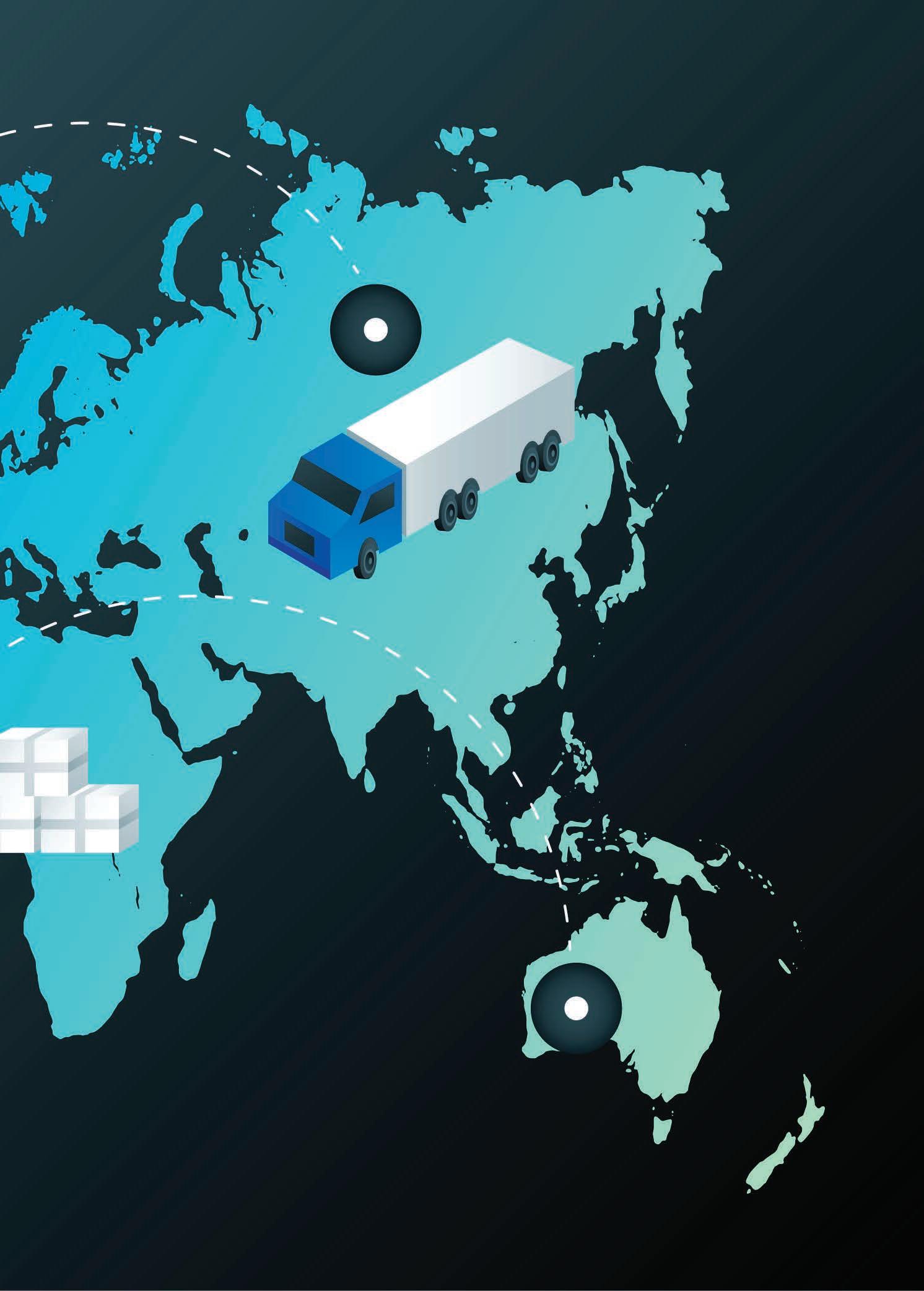 JAMES HOOKHAM Director
JAMES HOOKHAM Director

3.1
Shippers navigate a troubled market
As the year closed, most commentators were forecasting a return to barely profitable shipping rates, and contemplating the prospect of 2023 bringing new capacity to what had suddenly become an oversupplied market.
On top of that, regulators around the world are discussing the possible end of the muchcherished antitrust immunities for shipping consortia. Additionally, the first mandatory global fuel efficiency requirements for existing ships will take effect this year.
In December, the industry’s flagship digital trade platform, Tradelens announced it was ceasing operations by the end of March.
The decline in global economic activity following the interest rate hikes by central banks caused the collapse of spot rates.
That, plus rocketing energy prices triggered by the war in Ukraine, has now reversed the equally unexpected spike in demand for consumer goods during 2020 and 2021. US imports returned to their pre-COVID levels in January 2023.
Carriers thrived, as the nine global container shipping lines that dominate the sector will have reported aggregate profits approaching $500 billion over 2021 and 2022.
Yet, 2021-2022 was a period when the predictability of ship arrivals, and the availability of goods to importers dropped to historic lows. Global shippers were paying top dollar for worst-ever service levels.
To secure some level of commitment, many importers and exporters were persuaded by carriers to switch more of their container volumes to a contracted basis. Abetted by industry commentators confidently forecasting that record high rates were here to stay, many shippers locked-in at contract prices prevailing in the first quarter of 2022.
But as the era of Quantitative Easing gave way to interest rate hikes, spot shipping rates tracked consumer demand downwards from mid-year, leaving many shippers regretting their decision. Shipping lines have continued to make money, but are now dialling down their outlooks for 2023.
34 TRADE FINANCE TALKS www.tradefinanceglobal.com
Global Shippers Forum
To read the international shipping media during the final quarter of 2022, you would be forgiven for thinking that it’s “Game Over” for international trade.
Many shippers have been scarred by these experiences. It is likely that the only metric to fall faster than the spot rate benchmarks has been the levels of customer satisfaction in the industry. This is leaving a legacy of doubt and mistrust that could haunt relationships for years, and it could not come at a worse time for carriers.
Aside from the generally accepted doctrine that business is better if your customers respect what you do, there are four transformational developments that will play out during 2023. So far in 2023, the shipping industry has already started looking for the support and cooperation of its customer base in these four categories.
Decarbonisation
Shipping is significantly lagging behind every other industrial sector in its commitment to the Paris Agreement goals of netzero carbon emissions by 2050. The costs will be enormous, and persuading customers to carry their share will be a crucial factor in whether ships operating with novel fuels receive the patronage they deserve.
Things have not gotten off to a good start with a proposal to impose a global carbon tax on marine fuels. Most shippers assume it will just be passed on to them in higher rates and surcharges.
The shipping industry urgently needs to set out its decarbonisation plan. They need to answer the question of which fuels will be used on which routes, and over what timescales, before attaching an arbitrary and upfront price for its customers.
Digitalisation
2022 was a turning point in the digitalisation of international trade, with the introduction of the Electronic Trade Documents Bill in the UK Parliament, set to give legal recognition to electronic Bills of Lading in English law, the basis of most international trade contracts.
Getting customers and shipping lines to use prototype digital systems has, however, proved challenging. The demise of the pioneering Tradelens project, led by Maersk and IBM, was an unexpected set-back for digital advocates.
A lack of trust between the parties seems to have impeded wider adoption. Additionally, a reset of the digital relationship between platform providers and users is urgently needed to help reignite the drive to full digitalisation.
Disruption
Regardless of the successes or failures of the shipping industry during COVID-19, it was evident that global supply chains were unable to withstand the shocks they endured. It would have been unreasonable to expect zero disruption, but equally unjustified is a belief that it will never happen again.
The global trading community needs to be better prepared for the “Next Time”, when the uncertainty of supply exceeds the scale of consumer demand. Carriers want more volume on contract to give better visibility, but they should first reflect on shippers’ experiences in 2022. Digitalisation will help, as will greater awareness of supply
chain vulnerability in the boardroom. Ultimately, a deeper working relationship between shippers and shipping lines will be a prerequisite for the success of the many resilience plans that are now being formulated around the world.
Diversification
Shipping lines may stumble into this new paradigm through accident. Many are using their windfall profits to augment their range of services to include inland logistics, warehousing and sortation facilities, and ‘final mile’ deliveries.
Some have even purchased airlines or acquired cargo aircraft. If these ‘full logistics offerings’ are to succeed, there will need to be a greater degree of risk sharing between shipper and carrier than the zero-sum game that is the current ocean shipping product. Providing a door-to-door service, which shipping lines claim they want to do, means saying to your customers “You won’t hear from us other than when your goods have been collected and when they have been delivered … at the agreed times and the contracted price – no excuses, no surcharges”. After shippers’ collective experiences over the past three years Global Shippers Forum says good luck to that in 2023!
35 www.tradefinanceglobal.com
SHIPPING AND LOGISTICS IN 2023
UK Freeports: catalysts for regional economic development and recovery

Large national infrastructure projects have rarely been delivered at the pace of the UK Freeport programme; in March 2020, the government launched its consultation document, and in March 2021 it was announced that, subject to completing the necessary authorisation processes, the above eight locations would become Freeports.
Creation of UK Freeport Programme
Large national infrastructure projects have rarely been delivered at the pace of the UK Freeport programme; in March 2020 the Government launched its consultation document, and in March 2021 it was announced that, subject to completing the necessary authorisation processes, the above eight locations would become Freeports. By March 2023, all eight locations should have been officially designated, and each receive £25 million seed capital funding. The original eight sites will be followed by more Freeports in Scotland and Wales.
The timing of government designation for the Freeports and corresponding delivery launches early in 2023 is crucial to the recovery of the UK economy as it deals with the results of a sequence of unprecedented challenges; Brexit, COVID-19, the accidental blocking of the Suez
Canal, global industrial unrest, and war in Eastern Europe.
Global supply chains are currently undergoing a period of transformational change, and new business models are rapidly evolving to cope with continual international disruption. For UK based businesses, supply chain sustainability and resilience are becoming a priority. This factor, combined with new trade agreements, is driving change in trade flows as the trend for near and onshoring of manufacturing and energy capacity accelerates. The three core objectives driving the UK Freeport programme are aligned to:
a) Establish Freeports as national hubs for global trade and investment by focusing on delivering a diverse number of investment projects within the Freeport regions. Make trade processes more efficient, maximise developments in production, and acquire specialist expertise to secure Freeports
36 TRADE FINANCE TALKS www.tradefinanceglobal.com
3.2
JOHN LUCY Director Liverpool Freeports
position within supply chains.
b) Create hotbeds for innovation by focusing on private and public sector investment in research and development. This can be done by being dynamic environments that bring innovators together to collaborate in new ways; and by offering spaces to develop and trial new ideas and technologies. This will create new markets for UK products and services, and drive productivity improvements, bringing jobs and investment to Freeport regions.
c) Promote regeneration through the creation of highskilled jobs in ports linked to the areas around them,
ensuring sustainable economic growth and regeneration for communities that need it most. Local economies will grow as tax measures drive private investment, carefully considered planning reforms facilitate construction, and infrastructure is upgraded in Freeports.
The first objective, to establish freeports as national trade hubs and play an everincreasing role in accelerating the UK’s international trade and investment strategies is clear. The government claims that Freeports will be significant “in boosting international trade, attracting inward investment and
driving productivity across the UK”. All freeports will be targeting industries and sectors that will be driving the development of advanced logistics, manufacturing and research, and development activities that highlight the region’s existing strengths and trading partners.
Beyond the direct support for import and export activities, Freeports will become special economic areas within a 45 km boundary, whereby a broad range of general tax relief will be available for businesses to regenerate areas known as “Tax Sites”. Each Freeport has three such tax sites development areas,

37 www.tradefinanceglobal.com
SHIPPING AND LOGISTICS IN 2023
giving the UK several thousand hectares of prime port-based development land with significant tax breaks. Those measures will include the following:
Enhanced capital allowances. Companies in Freeport zones which invest in qualifying plant and machinery will be able to offset the cost against any taxable profits in the first year. That gives them an immediate increase in posttax profit as well as helping improve cash-flow. With the abolition of the original enhanced capital allowances scheme, it provides a replacement in Freeports and an added incentive for businesses to invest.
Enhanced structures and buildings allowances. Capital spent on renovating nonresidential buildings and structures will attract an annual 10% relief against taxable profits spread over ten years. This is much better than the relief currently available nationwide, which is set at 3% p.a. over thirtythree and a third years. The new relief will be available on defined expenditure, providing building contracts are signed and the qualifying assets are brought into use between 1 April 2021 and 30 September 2026.
Employer National Insurance contributions rates relief. Freeport employers won’t have to pay any employer NI contributions on their staff salaries, provided these employees spend 60% or more of their working hours in the freeport.
Business rates relief. Up to 100% relief on business rates will be available on certain business premises in Freeports. Local authorities will be given the power to set the details of this scheme in their own freeports.
Stamp duty land tax relief for purchases of land and buildings within a Freeport tax site, subject to a ‘control period’ of up to 3 years and the land being acquired and used in a ‘qualifying manner’
Complementary to building trade connections is the ability to ease cross border friction for goods, particularly for a net importer such as the UK. Multiple customs site operators (CSO’s) currently being established within all the UK Freeports benefit from a suite of customs easements such as:
Duty Deferral. Available whilst goods are on the freeport site
Duty Inversion. Available where the tariff on the finished goods is lower than on the component parts
Duty Exemption, where goods are imported into a freeport for processing and subsequently re-exported
Suspension of import VAT
Simplified import procedures
Conclusion
Innovation goals for UK Freeports are wide ranging and adapted to the unique characteristics and strengths of each area. Many are concentrating on green energy such as offshore wind farms, and enabling a low carbon multimodal infrastructure based on accelerating the shift to alternative fuels for road,
maritime and port facilities, and facilitating modal shift from road when appropriate.
The Department for Business, Energy and Industrial Strategy, together with Innovate UK, is responsible for delivering the UK Innovation Strategy, which aims to create the conditions for all businesses – including those within Freeports – to innovate.
As part of this, the Freeports Regulation Engagement Network (FREN) will help businesses innovate within the Freeports, and help them overcome the challenges of understanding regulation as they develop, test and apply new ideas and technologies. The network is intended to launch as Freeports become operational. The Department for Business, Energy and Industrial Strategy champions innovation, clean growth, and net zero goals and is responsible for engagement to help Freeports play a role in meeting those goals. The Department for Transport is responsible for engagement with the transport stakeholders to make sure all the core objectives align with existing departmental objectives.
Once operational, Freeports can successfully be integrated into the wider transport sector. Freeports support the Department for Transport’s ambition for a freight strategy which builds on the UK’s status as a global facing port nation. Freeports will amplify UK ports of all modes as hubs for innovation and investment, transforming our freight systems.
38 TRADE FINANCE TALKS www.tradefinanceglobal.com
3.3
The Times They Are a-Changin’: Navigating the new carrier landscape
Over the past five years, the logistics industry experienced an explosion of new market entrants. This expansion started before COVID-19 and then accelerated dramatically over the last three years.
Who are these new carriers, what distinguishes them from traditional carriers, and are they right for you?
The new entrants can be grouped into three general buckets – I’ll call them the opportunistic, the strategic, and the digital providers.
Opportunistic New Entrants
Opportunistic carriers are those that quickly popped up to provide service during the worst of the COVID-19 pandemic.
This bucket includes small vessel operators who rushed to capitalise on high ocean rates during the worst of the pandemic and retailers who chartered vessels to meet their own demand for space.
Now that rates have dropped and space is ample, these carriers have largely disappeared from the marketplace.
Strategic Entrants
One of the effects of the pandemic was the supercharge of e-commerce sales. As e-commerce platforms like Amazon grew ever larger, they expanded their logistics service offering.
Amazon now provides warehousing, distribution, and independently operated air cargo flights. It also sells its logistics services to companies not selling on the platform.
TikTok announced plans to expand into e-commerce services in the U.S to include customs brokerage, warehousing, and fulfilment.
Alibaba purchased Ninja Van for last mile deliveries.
Similarly, the ocean carriers invested their pandemic profits into offering end-to-end solutions.
Maersk Lines expanded into air freight by buying Senator and gained an Intra-Asia contract

39 www.tradefinanceglobal.com
LAUREN PITTELLI Founder & Principal Baker Logistics Consulting
SHIPPING AND LOGISTICS IN 2023
logistics network with the $3.6 billion purchase of LF Logistics.
CMA CGM created CMA CGM Air Cargo and bought freighter aircraft.
Mediterranean Shipping Company (MSC) purchased the African logistics provider Bollore.
Hub Group purchased the order fulfilment company Tagg.
Each of these traditional carriers has a strategy to diversify, refocus on profitable sectors, and increase customer stickiness through the new business segments.
Digital Providers
The last group of new market entrants are the digitalfirst freight forwarders and marketplaces. These new kids on the block offer a modern customer experience using technology to automate and streamline logistics processes.
The two best known digital forwarders are Flexport and
Fortos/Freighthub.
Twill, owned by Maersk Lines, is another example. Freightos is digital ocean marketplace and rate engine.
Most of the digital companies are owned by private equity (PE) firms, attractive investments in a fragmented industry ripe for consolidation. The PE investors bring their tech know-how and focus to the portfolio businesses, creating more digital, automated and data driven providers.
Pros and Cons of New Carriers
The strategy driven entrants are typically large global players attempting to offer a one-stop shop to global shippers.

These carriers can create opportunities for shippers to consolidate the number of supply chain partners, simplifying procurement and potentially driving down costs.
Some potential disadvantages can include disjointed service offerings where sales, operations
and visibility tools may not be integrated across the business units. In addition, the large scale of these organisations may not be a good solution for small to medium-sized companies (SMEs).
The digital providers offer a fresh take on logistics, new visibility tools and efficient operations. Some disadvantages are that the management is often recruited from the high tech or finance sectors, and has little knowledge of transportation or logistics.
Staff tend to be inexperienced, and boots are only on the ground in major markets, limiting the ability to tap into local knowledge.
The service portfolio works best for full container load imports to/from major points and is less satisfactory for air freight, less than container load cargo, and shipments on smaller trade lanes. PE ownership may focus on short term cash value above any other values.
40 TRADE FINANCE TALKS www.tradefinanceglobal.com
What a difference a couple of years make
During the pandemic, supply chains were under severe stress. Transport capacity was hard to find, slow to perform and very expensive.
Now we have the opposite problem. Shipping volumes have declined with the global economic slowdown, and transport rates have dropped precipitously. There is also a deep lack of trust between carriers and shippers.
Many carriers recently returned to red ink and the bloom has faded off some of their investments. The carriers have responded by scaling back or eliminating their new services.
Amazon closed 44 warehouses in the U.S. and cut back its flight frequencies. Maersk Lines closed its digital visibility provider Tradelens.
CMA CGM suspended all its U.S. flights. Impact in the digital forwarding space has been even

greater – shockingly, Flexport announced a layoff of 20% of its workforce, while Fortos is cutting 10%.
Solutions to a changing landscape
In today’s environment are the new carriers a fit and worth the risk? The challenge is to capitalize on new opportunities without taking on more risk or increasing costs.
Prioritize resilience and dependability in the supply chain. When evaluating potential supply chain partners, be sure to perform your due diligence. Focus on partnerships that can expand your company’s reach and capabilities rather than on transactional rates and services.
Just as companies are diversifying production, be sure to diversify your carrier base and shipping locations. As political and economic shifts occur, your business will be best positioned to react and weather the storms ahead.
41 www.tradefinanceglobal.com
SHIPPING AND LOGISTICS IN 2023
3.4
India: A potential winner in the China supply chain crisis
The country’s economy is taking a hit with factories being forced to shut down, resulting in a significant disruption in international commerce.
Creating opportunities from challenges

The disruption has created a unique opportunity for India, which is now gearing up to be a major player in global transport. And for owners of small and medium-sized businesses currently dependent on China for their imported goods and materials, India’s opportunity could provide long-term gains.
With massive investments in infrastructure and a commitment to manufacturing and shipping, India is determined to achieve a more prominent role in the global supply chain. The nation will have the chance to capitalize on this opportunity, but it will take time for the country to make the necessary investments to develop comprehensive infrastructure, and an efficient supply chain ecosystem.
Home to a population of 1.4 billion people who empower a well-educated and low-paid
workforce, India’s government is increasingly open to foreign investment. This means that businesses can easily set up operations in India and take advantage of the country’s low labour costs and abundance of natural resources that include minerals, oil, and gas, which can be used to produce a variety of goods.
India is also a major producer of agricultural products, which can be used to feed the world’s population. While India currently has a number of challenges in becoming a manufacturing exporting super force, an apathetic government is certainly not among them.
Government supported growth
The Indian government has announced plans to invest over $1.4 trillion in infrastructure projects over the next five years. This includes investments in energy, transport, and urban infrastructure, as well as enhancing digital connectivity and the development of smart cities. This investment will help to strengthen India’s manufacturing sector, as well as create an
42 TRADE FINANCE TALKS www.tradefinanceglobal.com
There is no question that the turbulent global economy and the unending impact of the COVID-19 pandemic have wreaked havoc on China’s supply chain.
CARMIT GLIK Founder and CEO Ship4wd
efficient and reliable supply chain that will support the country’s economic growth.
Additionally, the government is introducing incentives to attract foreign direct investment in the manufacturing sector. This includes tax incentives and reduces red tape, and increases the foreign investment limit in certain sectors.
Already one of the leaders of the global economy, India’s technology sector is growing rapidly. The country is home to some of the world’s most innovative startups and is becoming a tech hub for both domestic and international companies. India is also home to a large and growing labour and consumer base due to its steadily rising population.
The Indian government is planning on increasing spending by an estimated $25 billion to improve the shipping and port infrastructure, according to an article published in November on an Indian English language news service Times Now. This comes as no surprise since Apple has taken a significant interest in India and plans on increasing the production percentages of iPhones, according to recent reports.
In the next few years, Apple could be producing almost a quarter of its products in India rather than China. If Apple is any indication of what’s to come, other major corporations around the world may also turn to India for their manufacturing processes. And the subsequent ramp-up in productivity will pave the way for infrastructure that can provide a host of cost-efficient options for mid-sized companies.
One of the biggest risks for businesses and companies relying on the timely delivery of goods is depending on government policies that affect national economies and international transactions. If the global pandemic in 2020 taught the world anything about the supply chain, it is that being diversified is key to decreasing logistical risks.
Although China established itself as a supply chain leader and invested significantly in its infrastructure and manpower to support these initiatives, 2020 shifted the tide. The Chinese government has absolute control over their industries.

China placed a “zero-COVID” policy and demanded lockdowns long after other countries ended their precautionary actions against the virus. This is another reason why companies are finding it difficult to depend solely on the world’s leading manufacturer.
Conclusion
Small and mid-sized business owners will benefit immensely from India as the country improves its manufacturing and becomes a leader in the supply chain. By improving their infrastructure and manufacturing processes, these businesses will benefit from India’s new shipping resources to move goods more efficiently when importing.
As with all increases in competitive options, the customer will ultimately benefit. As the world witnessed in 2020, anything can happen, especially with international business.
Diversifying manufacturing
around the world will be crucial to human economic stability and sustainability. Entrepreneurs, business owners and logistics managers looking to establish long-term relationships in an emerging marketplace that’s committed to collaboration, profitability, and growth should rigorously explore their options in India.
43 www.tradefinanceglobal.com
SHIPPING AND LOGISTICS IN 2023
DIGITISATION IN SHIPPING AND LOGISTICS

4
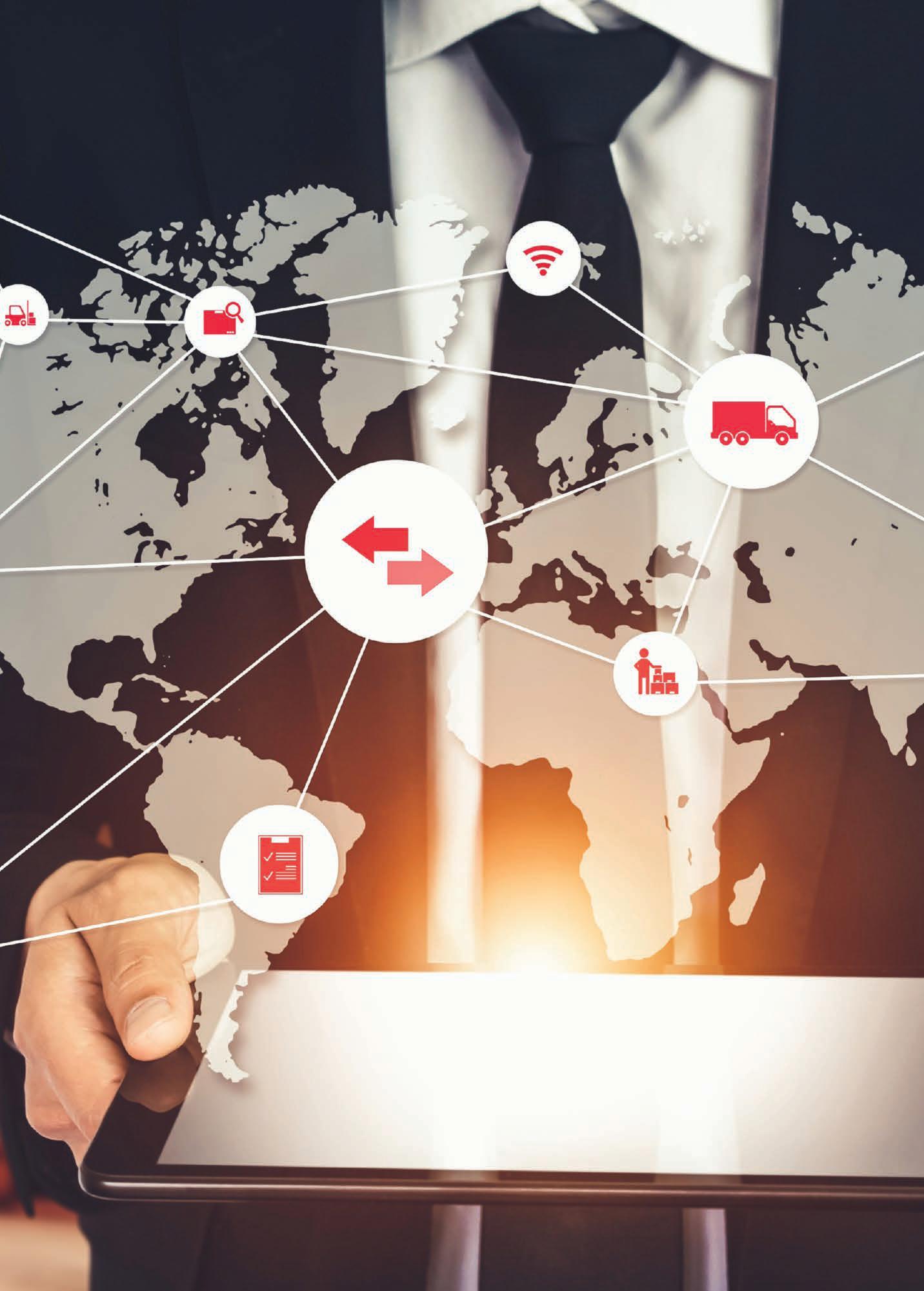
4.1
Shifting the mindset towards innovation in ports
Change is part of the modern world and innovation is one of the key drivers for change.
The prevailing question is: are the ports in the right mindset towards innovation?
Many port authorities, port operators, and important stakeholders of the maritime supply chain are investing many efforts to introduce innovation into their organizations.
They understand that the industry is changing, sea shipping companies operate air cargo fleets, retailers are operating sea cargo fleets, and to continue operating successfully in the new reality, ports need to do things differently.
With the aim of closing the gaps of ports around the world in terms of competitiveness of both physical and digital infrastructure, the International Association of Ports and Harbors (IAPH) gathered a group of innovation experts from ports around the world to develop a set of tools for innovation in ports.
The first one developed was a short non-technical guide for ports’ innovation role, with practical examples from ports who have already commenced their own innovation journeys: “The mindset shift towards innovation in ports”.
6 common misconceptions about innovation
Dr. Patrick Verhoeven, managing director of IAPH, said, “A lot of it is about thinking differently. Different may not always be better, but better is always different”

So let’s now have a different look at innovation in ports and highlight a number of misconceptions about it.
“We have many operational challenges to handle; this is not the time to invest efforts in innovation”
Indeed today, ports face multiple challenges such as new international and national regulatory requirements, strong international competition, accelerated digitalisation, and major climate and environmental challenges.
Innovation is one of the tools with which ports can tackle these challenges, an innovation
46 TRADE FINANCE TALKS www.tradefinanceglobal.com
GADI BENMOSHE CIO
Israel Ports Development & Assets Company (IPC)
strategy makes it possible for ports to adapt and reinvent themselves in what has now become a highly competitive and uncertain environment.
“Innovation is only about technology, mainly information technology (IT)”
Innovation is often referred to IT and technology, but innovation can be implemented in many of the port’s activities: products and services, processes, organizational structures and the business models at ports; with technology enabling innovation rather than being a solution in itself.
“Innovation can be done in addition to an operational role at the port”
Some ports assign the innovation activity as additional responsibility to an operational role at the port, mainly in the IT division. By doing this, not many efforts are dedicated to innovation, because operational needs consume most of the resources and the few activities achieved are mainly focused on technology.
Efficient innovation requires someone in the organization who can focus all their efforts in fostering innovation.
For that reason, one of the first steps in the innovation journey is appointing a Chief Innovation Officer (CINO) who should report directly to the top management.
“Innovation can be a oneperson-show”
Some may expect that the CINO can bring successful innovative solutions without the support of
all other departments in the ports, but this is not the case.
One of the important roles of the CINO is to build an innovation culture at the port, raising awareness and building a team of innovation agents in the various departments.
Those innovation agents will highlight existing pain points and the port’s processes knowledge, which will be the base of the innovation solution scouting. This will help build the use case for hackathons/pilots/proofs of concept, and support the successful implementation of innovative ideas.
Open innovation, which builds collaboration with the different agents of the port community, can accelerate the innovation process and bring benefits to all the members of the maritime supply chain.

“Innovation tools as hackathons/ pilots/proofs of concept can be managed as a stand alone activity”
Hackathons/pilots/proofs of concept are useful tools for innovation activity, but they bring limited contribution when they are treated as stand alone projects.
It is important to do it as part of a predefined plan that determines the transition parameters from each phase, backed up with the needed legal/contractual framework, and backed with the needed funding.
“The right time to invest in startups is after they already have paying customers”
This is not always the case. It
depends on the amount of the investment required. Those ports which prefer to invest a small amount, can invest in start-ups that are at their earliest stages. Establishing a Corporate Venture Capital (CVC) arm in ports is an innovation mechanism that can generate revenue streams (in the long term), while also increasing the appeal of collaborating with the port.
Innovation is a key tenet of the IAPH Data collaboration Committee (DCC), chaired by Pascal Ollivier and vice chaired by me, and the IAPH would like to encourage ports to join DCC and take part in this exciting journey we have embarked upon, where everyone has something to gain.
47 www.tradefinanceglobal.com
DIGITISATION IN SHIPPING AND LOGISTICS
PUNIT OZA CEO WIZ Bulk

4.2
Ecosystems within the maritime industry: the changing styles of leadership
This article first appeared in the November 2022 issue of the Maritime and Port Authority Academy’s ‘Horizon’ newsletter.
I would like to thank Dr Arnoud De Meyer, whose lecture on business ecosystems during the SMU course on “Digital Transformation” inspired my thoughts for this article.
I remember reading a quote which has stuck in my mind ever since – “Sharing among an entire ecosystem of innovative partners is a crucial step for modernisation.”
While this sounds very nice in theory, what does it mean in practice and also, what does it mean today in the context of the maritime industry? An industry in which I am deeply involved, and which is undergoing change at a rapid pace.
In this article, I provide my views on what constitutes an ecosystem, the key ingredients that make it successful, how a different style of leadership is needed to build & grow a successful ecosystem, and finally my own continuing journey of building & growing a maritime business ecosystem.
Ecosystem: starting from the beginning
Though it sounds like an intimidating topic, each of us works and lives in multiple ecosystems.
The key feature of a successful ecosystem is that the value created by the collective is greater than the sum of all the individual values. This is important to remember all the time, United We Win, and Divided We Lose.
There are multiple examples of business ecosystems including Alibaba, Amazon and DBS Bank. In the maritime context, shipping pools such as the Maru-Klav Baumarine Pool of Torvald Klaveness, are a good example of a business ecosystem.
They bring competitors and a variety of other players together, along with other support ecosystem partners to deliver greater composite value to the end customers. The pool managers are both aggregators as well ecosystem leaders.
48 TRADE FINANCE TALKS www.tradefinanceglobal.com
Currently, there are two urgent themes requiring the maritime industry’s attention – digitalisation & decarbonisation. Neither of these can be holistically addressed by any individual company.
What makes an ecosystem successful?
Having established the concept of a business ecosystem, let us try to figure out what makes such an ecosystem successful. Remember, the ecosystem is a loosely coupled network, with diverse interests among partners.
The very first ingredient for any business ecosystem to succeed is to scale up as fast as possible. To succeed, they must scale fast enough, and in such a diverse fashion so as to service the customer with multiple touch points and produce both value & stickiness, eventually scaling up across customers.
While we associate scaling up with start-ups, it is the same with a business ecosystem as well. The solution must be as widely applicable as possible.
Internally, the most important ingredient is a high level of trust. The partners should feel
comfortable in sharing, learning & working towards a common goal to service the customer and scale up.
A lot of the ecosystem partners will also be operating in the same market and competing with the other partners of the same ecosystem, but they need to trust that the knowledge shared by them is secure enough and will not be misused. There is of course no guarantee of that.
Another key ingredient is deciding clear high-level outcomes. The ecosystem must aim to solve a tangle and scalable pain point of the customer, be it visibility, resilience, efficiency, or value creation.
Continuing with the example of Shipping Pools, it is focused on minimising geographical risk, maximising earning potential and providing access to market intelligence and analysis. This is what will eventually crystallise into a customer-centric offering.
Given the nature of ecosystem partners and the loose structure, clear communication is another vital ingredient. The communication extends to all stages.
During the pre-formation stage, communicating the key desired outcome, the strategies involved and the expectations from the partners in terms of deliverables is crucial. Once in operation, the update on the progress, key milestones achieved, and the path ahead, needs to be communicated to maintain the participation and contribution of the partners.
Keeping the partners together – both in spirit and in person is another key ingredient. The key is to have one or multiple collaborative platform(s) which could range from monthly meetups to digital platforms and dashboards to provide realtime updates to partners on the progress and achievements. The ability to provide feedback and act on it should be possible on such collaborative platforms.
Being an informal and loose network, the importance of good governance standards cannot be emphasised enough in an ecosystem.
Common standards and an ability to maintain and arbitrate any conflicts will not only create confidence in the ecosystem but also would be welcomed by the partners, who truly wish the solution to succeed.
The final ingredient, which is in fact the most crucial one, is the ability to monetise the ecosystem offering. After establishing the Unique Selling Point or Keystone of the value proposition, without

49 www.tradefinanceglobal.com
DIGITISATION IN SHIPPING AND LOGISTICS
which the ecosystem cannot deliver value, monetisation can take many forms.
This includes risk margins, licence fees, royalties, or other forms of fixed charges. Without a clear plan to generate a monetary stream, the ecosystem cannot operate in practice but is only a theoretical or conceptual exercise.
The person who brings all these ingredients together and drives the ecosystem forward is the ecosystem leader. An ecosystem leader needs to embody collaborative leadership but also go beyond that.
We are talking about the ability to actively network, command trust of the partners, develop a clear goal and strategy and embrace differences and diversity. Ecosystem leadership is the skill that future leaders will have to acquire, and the maritime industry is no exception.
Maritime Industry Ecosystems
Currently there are two urgent themes requiring the maritime industry’s attention –Digitalization & Decarbonization. Neither of these can be holistically addressed by any individual company.

To create any scalable solution, the industry will need to come together to create an ecosystem and therefore will need ecosystem leaders to take them forward. The Maritime and Port Authority of Singapore (MPA) has taken a lead to set up a Global Centre for Maritime Decarbonization (GCMD) in Singapore. A global
effort will require a completely different approach to leadership compared to managing a team within a single organisation.
WIZ Bulk’s Vision: an exciting journey
This brings me to my current position as the Chief Executive Officer of WIZ Bulk. A new company with a vision to simplify bulk shipping. WIZ, as a group, has been quite successful in container freight, air freight
as well as land transport and warehousing.
However, its key differentiator is the digital platform (WIZ Freight) which is a one-stop solution for customers to secure container freights. It’s complicated to build a similar solution for bulk customers due to the fragmented and non-standardised nature of the bulk shipping industry.
But WIZ has embarked on a journey to build an ecosystem with partners across the
50 TRADE FINANCE TALKS www.tradefinanceglobal.com
technology industry and the shipping space with a few clear objectives: simplify the processes, create a single platform for all relevant data required for decision making and automate as many processes as possible.
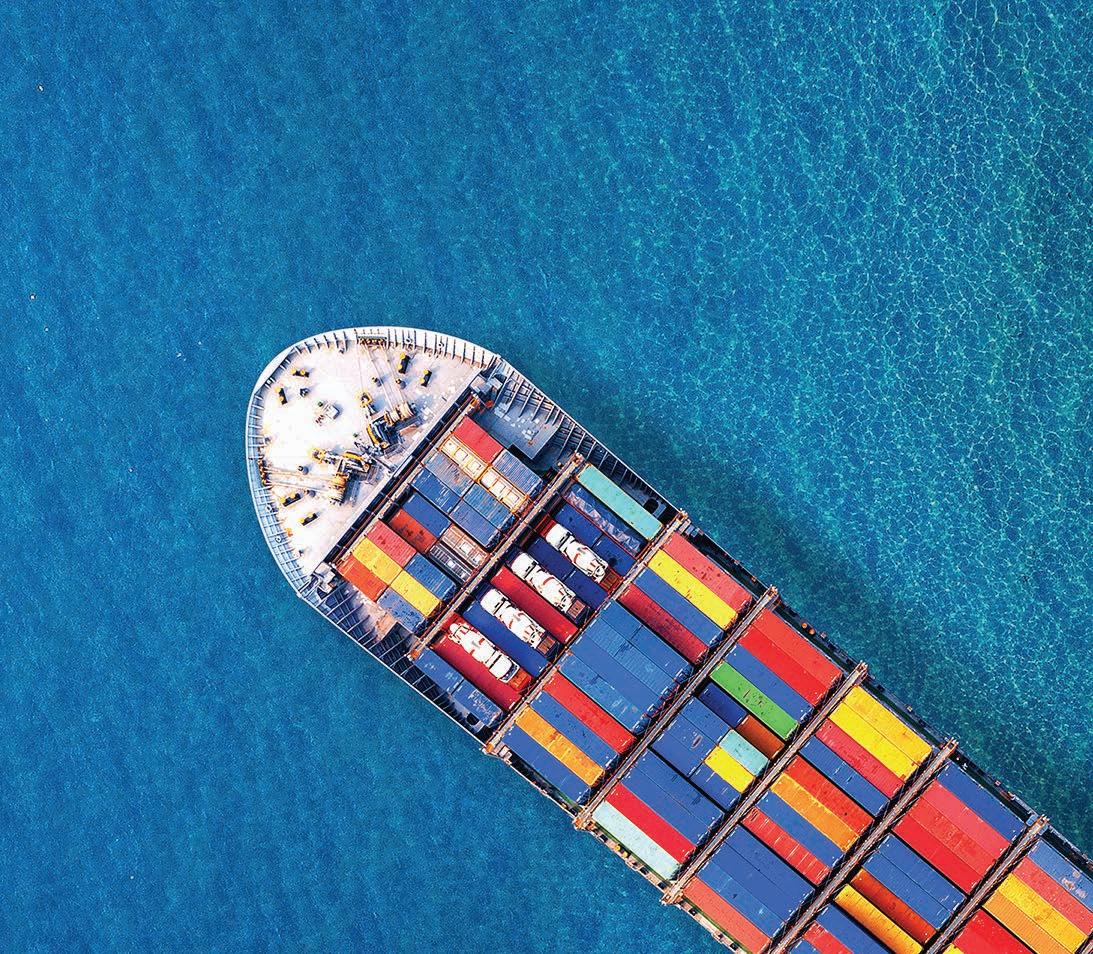
The key aim is for the user to work with the system for the quantitative aspects so that their focus can remain on the qualitative aspects of the deal. Spending less time searching for
information means more time to use and analyse.
The larger vision of WIZ is to transform trade through technology. The larger ecosystem will encompass land transport, deep sea shipping, cargo handling, warehousing, and providing unparalleled visibility in real-time to customers.
We are taking this forward through an ecosystem approach,
currently at an early stage, but maturing in the coming months.
To conclude, the future is not going to be a competition between companies, but ecosystems. The sooner we learn to collaborate and equip the leaders in our industry with the ability to lead an ecosystem, the better it will be for all of us.
The “life” of a “lifeline” industry is about to change forever!
51 www.tradefinanceglobal.com
DIGITISATION IN SHIPPING AND LOGISTICS
4.3
DeFi in Trade Finance: Fulfilling the promise of Globalisation
of
Introduction
I first learned of the term globalisation in 1992 during my first year of A level’s. We were asked to write an essay on how the new paradigm of globalisation would affect the world, and in particular small island developing states like my home country, Saint Vincent, in the Caribbean. I was fascinated by this new transformation and sought as much research as possible. Fortunately, my close neighbour was a government minister, and gracefully provided documentation. For my efforts, my essay was selected amongst the top three for submission to the Royal Commonwealth Society competition, and whilst not winning first prize, I achieved a commendation.
Now, 30 years later, having spent half of that time as a Supply Chain Logistician in the Royal Navy, I have come to appreciate the importance of the way the world is connected by supply

chains. However, as seen by the supply chain shocks and financial crises which have continued in succession since 2008, the dream that was promised by developing countries who created the new structure has not been fulfilled.
Promises Unfulfilled
The promises of the benefits of globalisation for citizens not only in developing states, but also in major economies never materialised. The Caribbean region saw their agricultural economies decimated as preferential agreements were lost. In the United States, the manufacturing rust belt regions lost thousands of jobs as companies moved offshore to benefit from cheaper labour and tax regimes. Instead, large developing economies such as China and India gained enormously, leading to the rising scale of inequality around the globe. This is highlighted by a few statistics:
52 TRADE FINANCE TALKS www.tradefinanceglobal.com
KELROY D B JAMES Supply Chain Manager Royal Navy
The shift to a more digital form
globalisation changes who is participating, how business is done across borders, and where the economic benefits are flowing.
Between 1990 and 2016, China’s share of the world’s gross domestic product (GDP) rose from 4.1% to an astonishing 17.86%, whilst India’s share grew from 3.6% to 7.3%.
The G7 economies—Canada, France, Germany, Italy, Japan, the United Kingdom and the United States—fell from more than 50% in 1990 to 30.96% in 2016. However, they remained relatively prosperous having started off from a high level of development.
Countries in sub-Saharan Africa’s increased by less than half a percent; along with marginal gains in the Middle East and North Africa.
Latin America and the Caribbean’s share of the world’s GDP actually declined from 10% to 7.9%. The small countries of the Caribbean were the worst losers in the region.
Thus, the globalisation process created significant challenges to small developing economies such as those in the Caribbean, which are already dealing with a number of issues in their pursuit of sustainable development. Consequently, many, if not all of them, are unlikely to achieve the much-vaunted 17 Sustainable Development Goals set out by the United Nations in 2015 in its
Ageing Foundations
Globalisation has occurred for centuries. Since World War II, there has been the growing interdependence of the world’s economies, cultures, and populations, brought about by cross-border trade in goods and services, technology, and flows of investment, people, and information. The technology and infrastructure that supported these flows were developed in an analogue age, dependent on manual paper based processes and lack of interoperability. For example, 90% of traded goods are transported by sea, however, the necessary documentation such as Bills of Lading and Letters of Credit for finance are still paper based. Additionally, financial flows and cross border payments are typically costly due to currency exchange costs, intermediary charges, and regulatory costs.
International trade is an important driver of development, as such the availability of finance is essential for a healthy trading system. In 1990, the total value of global flows of goods, services, and finance amounted to $5 trillion, or 24% of world GDP. By 2014, this increased to $30
trillion worth of goods, services, and finance, equivalent to 39% of global GDP. According to the World Trade Organisation (WTO), up to 80% of global trade is supported by some sort of financing or credit insurance. In particular, SMEs require access to credit for survival, with the estimated shortfall in financing for SMEs being $5 trillion. However, there are significant gaps in provision and therefore many companies cannot access the financial tools that they need. Without adequate trade finance, opportunities for growth and development are missed; businesses are deprived of the fuel they need to trade and expand.
Decentralised Finance
‘Decentralised Finance’ (DeFi) is neither a legal nor a technical term. Decentralised provision of financial services happens through a mix of infrastructure, markets, technology, methods, and applications. Decentralised provision of financial services means, provision by multiple participants, intermediaries, and end-users spread over multiple jurisdictions, with interactions facilitated by technology. Thus, DeFi is key to enabling open access, participation and opportunity in the new digital economy for everyone.

53 www.tradefinanceglobal.com
‘2030 Agenda for Sustainable Development’.
DIGITISATION IN SHIPPING AND LOGISTICS
Globalisation was once driven almost exclusively by governments, large multinational corporations, and major financial institutions. However, the world has become more intricately connected than ever before. Today artisans, entrepreneurs, app developers, freelancers, small businesses, and even individuals can participate directly on digital platforms with global reach. Digitisation changes the economics of globalisation in several ways, as digital platforms become global in scope, they are driving down the cost of crossborder communications and transactions, allowing businesses to connect with customers and suppliers in any country. Digital platforms reduce the minimum scale needed to go global, enabling small businesses and entrepreneurs around the world to participate.
Conclusion: A new paradigm
The shift to a more digital form of globalisation changes who is participating, how business is done across borders, and where the economic benefits are flowing. This creates a new paradigm where not only large corporates, but also retailers, SMEs, and individuals use international payments, integrated commerce, or trade interfaces regularly. According to Mckinsey, improving the global trade finance ecosystem could add many of the 600 million new jobs needed by 2030 to absorb the growing global workforce, as well as enable progress toward the goal of financial inclusion, which is particularly needed in developing economies. Consequently, the adoption of DeFi through digital transformation and digital globalisation could become an opportunity to improve the economic, human, and psychological condition of citizens around the world.

54 TRADE FINANCE TALKS www.tradefinanceglobal.com
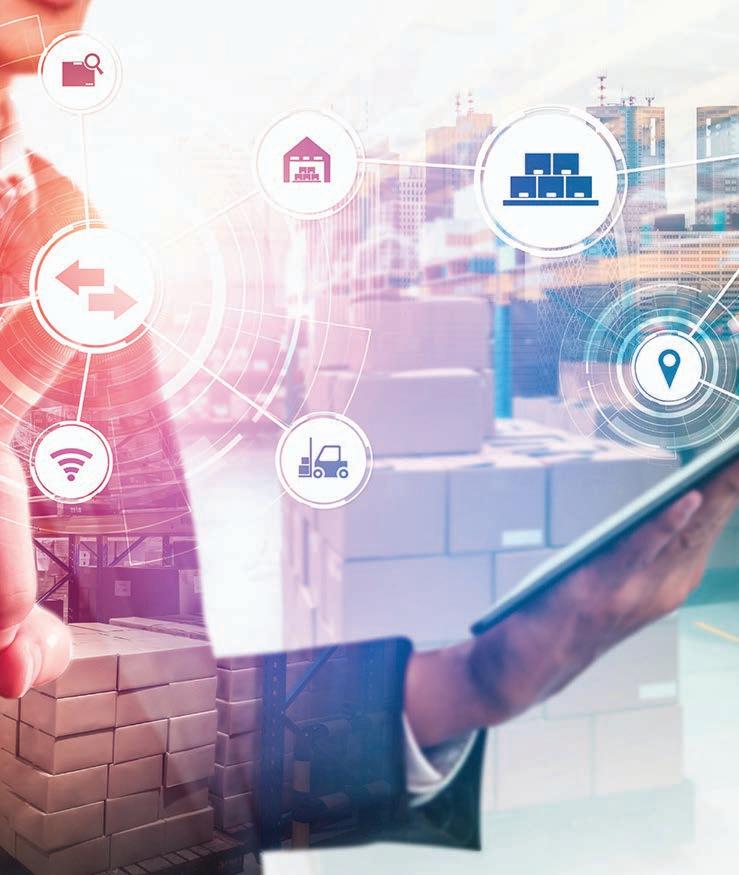
55 www.tradefinanceglobal.com DIGITISATION IN SHIPPING AND LOGISTICS
4.4
To agriculture and beyond: a look at how IoT technology is transcending industry silos
2022 was a year filled with ups and downs for trade technology companies, but there are many bright spots for 2023.
Industry actors are collaborating for many reasons: the promise of reduced risks, streamlined operations, increased transparency, and cost savings entice industry actors to collaborate towards incorporating cutting-edge technologies into their operations.
Veridapt and GrainCorp are companies that are actively involved in the technological development of the commodity and agricultural sectors.
To learn more about their collaboration and the role that technology can play in the commodities industry, Trade Finance Global (TFG) spoke with Peter Johnston, PJ, senior manager digital and agtech at GrainCorp, and Sean Birrell, CTO and co-founder of Veridapt.

Modern farmers face modern challenges

The pace of agriculture has accelerated rapidly over the past few decades, with mechanical and technological advancements
increasing the scale on which many farms now operate.
PJ said, “Farmers today might have a harvester that harvests grain at 50 tons an hour, which is a lot of grain being harvested at a given time.”
This accelerated pace forces many operations to increase their on-farm grain storage because they simply cannot transport the grain fast enough from the harvester to traditional thirdparty storage depots.
More on-farm storage creates increased risk for the farmers, as they have more inventory at any time.
Internet of things (IoT) solutions, such as those provided by Veridapt, are being used to give farmers an accurate picture of the volume and quality of the grain they are storing on-farm. This technology allows them to manage the grain better as they prepare to deliver it to customers or depots.
56 TRADE FINANCE TALKS www.tradefinanceglobal.com
CARTER HOFFMAN Research Associate Trade Finance Global
SEAN BIRRELL CTO and Co-founder Veridapt
Establishing this visibility, however, is challenging.
“Many farms are very large and often quite remote,” Birrell said. “This can lead to communication and power concerns and can even make installation a challenge.”
“Being able to meet those challenges cost-effectively is where this generation of IoT technology is starting to shine.”
AgriTech can help to address these challenges
Newer IoT technology is designed to be easier to install, lower cost, more reliable, and with more straightforward configuration and setup, making it a cost-effective solution for the agriculture industry, which is under constant price pressure.

Birrell said, “The actual configuration and setup are getting easier all the time. It’s a bit like how every time you set up a new smartphone, it’s easier than migrating from the last one.”
Now, the technology can often be set up in a matter of hours by individuals that aren’t necessarily experts - a vast improvement over the situation in the past. The technology is also able to provide a fit-for-purpose solution that can be used in a variety of situations, including farms and large-scale supply chains.
But the new digital advancements are not just benefitting the agricultural sector.
Looking beyond the agricultural silo
Many solutions to remote monitoring challenges that seem unique to the agricultural space can be applied to challenges in other areas.
For example, agriculture supply chains are often faced with what is referred to as a floating balance problem.
Harvesters returning from the fields may be adding crops to on-farm storage at the same time that other trucks are taking crops out of the storage to deliver them to a local depot.
To have full transparency - which becomes more critical when some of these operators are sub-contractors - the deployed technology needs to go beyond aggregate measures of the entire storage.
It also needs a means of separately measuring both the incoming and outgoing supply. “That challenge that we’re addressing in the agricultural industry also applies directly to the base metals industry,” Birrell said.
“Large stockpiles in remote areas are typically surveyed using traditional techniques that only provide one-off snapshot measurements. But there are certainly instances where you might need more continual flowbased measurements.”
Investing time and resources into developing the technology
in one industry can uncover new and better use cases for that technology to be applied in adjacent fields.
Birrell added, “You end up with this virtuous circle of developing new capabilities and being able to advance the technology in each of those individual industries.”
57 www.tradefinanceglobal.com
DIGITISATION IN SHIPPING AND LOGISTICS
4.5
Three tech strategies for shippers in 2023
U.S. container imports in December continued to close in on 2019 volumes, port delays continued to improve, the maritime capacity crunch has eased, and ocean shipping rates have approached pre-pandemic levels.
Key economic indicators, however, paint a conflicting picture of their future impact on import volumes. Combined with COVID-19, geopolitical upheaval, and ongoing U.S. West Coast labour issues, macroeconomic indicators point to challenging global supply chain performance in 2023—compelling companies involved in international trade to remain focused on building supply chain resilience.
Rapidly identify new suppliers, markets, customers and trade lanes with global trade intelligence.
The ability to quickly find alternative suppliers, markets, customers and trade lanes is critical as global supply chain unrest persists. Sourcing experts need to expand their universe of
candidate partners to safeguard commodity availability and bolster supply chain resiliency.
While shippers may know their own supply chains well, they may not appreciate the full range of sources that exist globally, such as qualified suppliers operating outside of their own country or usual trade lanes.
Global trade intelligence solutions capture worldwide import and export flows and present a broader pool of potential global trading partners. They allow shippers to make informed business decisions by automating the analysis of vast amounts of data that can show market overviews and historical trends to identify shifts in demand.
With this information, businesses can locate alternative suppliers already trading in their region or elsewhere across the world and coordinate supply chains accordingly. With trade data, companies can also evaluate supplier and factory location density to mitigate reliance on over-taxed trade lanes and

58 TRADE FINANCE TALKS www.tradefinanceglobal.com
As 2023 unfolds, shippers are experiencing signs of relief from the supply chain upheaval over the past few years.
JACKSON WOOD Director, Industry Strategy, Global Trade Intelligence Descartes
regions of the globe where the potential for conflict exists.
Companies can also use global trade intelligence solutions to determine the most expedient and cost-effective shipping routes and modes of transportation. By automating trade data analysis, technology can, for example, identify less congested transportation lanes, such as smaller ports, to improve supply chain velocity and reliability.

While total transit time is important, so is supply chain predictability.
Leverage HTS classification and landed cost calculations
Businesses know they must keep a close eye on their sources of raw materials, parts and finished products to ensure that logistics costs—and tariffs—do not erode overall profit margins.
The need for greater visibility into trade variables and the ability to quickly formulate action plans when they change is a higher stakes game today, as customs and import professionals grapple with supply chain instability.
Technologies for Harmonized Tariff Schedule (HTS) and Harmonized System (HS) classification and landed cost calculations allow shippers to analyse the financial viability of existing and new trade networks.
Instead of traditional labourintensive manual methods for classification, such as research in hard copy books or on multiple government websites, technology helps shippers to classify significantly faster by making up-to-date tariff and related information from around the world accessible from a single, cloud-based solution. This
59 www.tradefinanceglobal.com
DIGITISATION IN SHIPPING AND LOGISTICS
information helps companies choose the right supply chain path to maximise profit.
Understanding the potential landed cost of alternative suppliers is also critical to the bottom line performance. A changing tariff landscape can make this exercise more difficult than ever.
Shippers need to model costs by determining the most accurate and appropriate tariff classification, relevant beneficial trade agreement provisions and any specific rules of origin or tax implications for imported commodities.
Taken together, these variables constitute core elements of determining the total landed cost of each sourcing option. Shippers also need to continuously assess duty, tax and Free Trade Agreement (FTA) implications. Keeping pace with these fluctuations, especially during times of disruption, can help maximise profitability.
Use denied party screening solutions to vet trading partners
As trade patterns continue to shift in the wake of the pandemic, other geopolitical and economic factors are creating a fluid and unpredictable global trade environment, including the conflict in Ukraine and wideranging sanctions on Russia, the West’s decreasing reliance on trade with China and greater global diversification among trading partners.
As shippers continue to adjust to these dynamics, companies must make sure, as they form new trading relationships, that key
suppliers, customers and logistics partners are not on sanctions lists.
Denied party, sanctions and third-party screening is fundamental to ensure that business is not conducted with bad actors worldwide. In an environment of heightened security, changing regulatory regimes, rising fines, and complex sanctions ownership requirements, proper technologyenabled compliance screening is a must.
At its core, automated compliance screening is a due diligence review of an extraordinarily high volume of information as it flows into and out of business systems, such as transactions, employees, partners, contractors, subcontractors and prospects, to ensure business is not conducted with entities on a government restricted, debarred or sanctioned party list.
A denied party list is a broad term that can include watch lists, sanction lists, concern lists, restricted party lists and embargoed countries. A large number of entities maintain denied party lists, which can include individuals, companies, foreign government agencies, and locations.
Companies conducting business with listed persons or entities could be subject to civil and/ or criminal prosecution, fines, denial of export and/or import privileges, and closure of financial processing. Given the ongoing and daily changes to most denied party lists, it is also necessary to conduct repeated screening for every entity, since their status with respect to any
given denied party list may change without notice at any given time. Beyond this, it is critical to maintain an audit trail and keep records of compliance efforts to hedge against risk.
Looking ahead
Forward-thinking shippers recognise that global supply chains are still under pressure from significant events and, moreover, that managing through disruption is not just a one-time event or even a shortterm problem.
These are the days when international businesses need to be able to reevaluate supply chains rapidly and constantly in order to remain successful— and global trade technologies are indispensable for shippers focused this year on making their supply chains more resilient.
60 TRADE FINANCE TALKS www.tradefinanceglobal.com

DIGITISATION IN SHIPPING AND LOGISTICS
5
SHIPPING AND ESG

 SAM
SAM

5.1
What to expect in the shipping industry for 2023
Certainty has been in short supply in the world of shipping in recent years. Shippers, manufacturers, and carriers have all had to adapt to rapidly changing circumstances, from the lingering impacts of COVID to geopolitical conflicts, from stocking trends to industrial action.
Throughout it all, many have been wondering, sometimes desperately, when things will get back to normal.
The hard pill to swallow is that 2023 will present its own set of challenges across every level of the industry. Shippers and carriers alike will need to be prepared for the implications of shifting capacity levels, an industry wide shift to a more sustainable future, and a challenging global economic climate.
Carrier capacity management challenge
The second half of 2022 was characterised by plummeting shipping demand and rates, resulting in high levels of excess capacity for carriers.
In 2023, this supply and demand imbalance is set to increase as new vessels enter the market with an approximate capacity increase of 8% on a global level.

64 TRADE FINANCE TALKS www.tradefinanceglobal.com
GREENHALGH VP & General Manager Zen Cargo
While the drop in rates may have been welcome news to shippers last year, the decline in schedule reliability certainly wasn’t, as carriers, in an attempt to manage this capacity imbalance, increased further blank sailing programs. This is a trend which is expected to continue and even intensify in 2023.

The increased capacity is also poised to add further pressure to the Big Three carrier alliances (2M, Ocean and THE Alliance). Already confronted with a sharp and seemingly endless drop in rates, it remains to be seen if 2023 will see carriers break ranks from these alliances to secure market share.
However, there are factors which will mitigate the impact of the new vessels entering the market, though to what extent is hard to predict. Some carriers are said to be in talks with shipyards to delay the delivery of new vessels.
Other options such as scrapping older less efficient ships has become an attractive choice given the introductions of the new
IMO regulations and monitoring this year. Yet another influence to consider in this already complex capacity equation.
How sustainability is set to transform the industry
The drive towards a more sustainable future in shipping has been gaining momentum in recent years reflected not only in legislation but also the carrier order books. 2023 marks the first year where ships will be required to collect and report on emissions data, mandated by new IMO (International Maritime Organisation) regulations.
In 2024, this data will then be used to issue ratings to ships, with poorly performing vessels required to improve or face being idled. This new reporting and rating framework represents the latest regulatory updates from the IMO. The new frameworks aim to achieve their overall goal of reducing the carbon intensity of all ships by 40% by 2030, compared to 2008 baseline.
This industry shift is also evident in order books for new vessels, with more sustainable dual fuel ships accounting for an increasing proportion of new orders. Dual fuel engines can operate on both conventional fuel sources and more sustainable forms of energy such as LNG, preparing carriers for the transition from traditional fossil fuels.
The CSSC (Chinese State Shipbuilding Corporation) reported that 31.6% of vessels completed in 2022 were dual fuel ships. The proportion of dual fuel ship orders is expected to continue to rise in 2023 and grow exponentially in future as carriers look for more sustainable fuel sources.
Biofuels also present a unique opportunity to the industry for a more sustainable future. Created from biomass, some biofuels, such as dimethyl ether, are able to ‘drop in’ and replace existing fuel sources without requiring extensive modifications to engines.
65 www.tradefinanceglobal.com
SHIPPING AND ESG
Therefore they can be considered the most readily available low emissions fuel option. However, they are substantially more expensive than traditional sources.
While biofuels may be considered as a costly alternative to traditional fuel sources and will require investment, the onus cannot just lie on carriers to make adjustments and bear costs.
Creating a more sustainable future requires action across the industry. Not only by carriers, but also by ports, manufacturers, and shippers to support this investment in a greener future.

Economic challenges on the horizon
Global economic predictions for 2023 are bleak and pose a significant challenge. The chief driver of supply chain context going forward will be demand –as long as economic conditions remain sluggish, importers will keep orders low.
The conditions driving this demand slump are complex, so any predictions must be taken with a grain of salt. Taking into account current demand levels, orders are unlikely to pick up until at least Q2 2023, depending on the specific vertical and region.
As economic turmoil has continued, industrial action impacting the shipping industry has increased. 2022 saw 38 incidences of industrial action impacting ports; more than quadruple the 2021 levels. These strikes often lead to mass disruptions, delayed shipments and increased congestion. With sluggish economic forecasts for the year ahead, the risk of further impact from industrial action in 2023 is high.
The role of digitisation in 2023
Along with the drive for capacity management, sustainability and efficiency from carriers, we are likely to see an increased role for supply chain technology in 2023.
Disruptions in 2022 highlight the importance of implemented new technologies into the shipping industry, including:
Monitoring and anticipating disruptions, to help build supply chain resilience.
Using real-time information to improve forecast accuracy, and better plan ship utilisation.
Implementing purchase order management to better gauge arrival times for specific products, and reduce origin dwell times.
Reporting and analysis of scope 3 emissions to ensure compliance with recognised standards such as the GHG Protocol and ISO 14000.
These tools not only affect how one runs their supply chain, but also how to work with partners –especially carriers.
By being a better partner – a shipper of choice – one can build value led relationships, based on accurate data and measurable service levels.
This will also be a key factor when economic conditions improve and restocking begins. Engaging with technology can provide additional agility.
2022 has been a tumultuous year for shipping, and uncertainty is expected to continue into 2023. Complex capacity challenges, an industry shift towards sustainability, the growing role of digitisation are all set against the backdrop of a stressed economic climate. With all of this in mind, 2023 will be another difficult year for the shipping industry.
66 TRADE FINANCE TALKS www.tradefinanceglobal.com
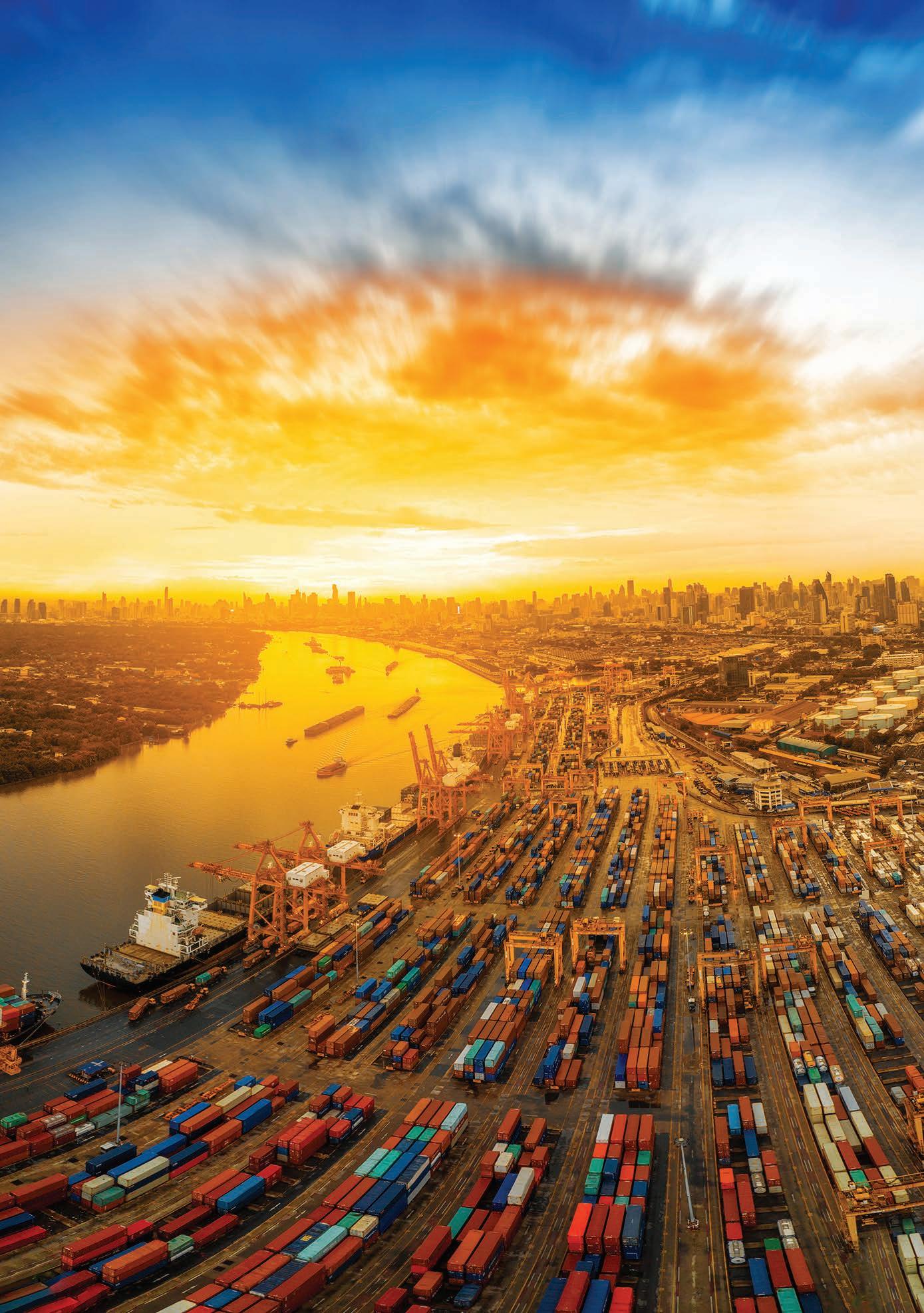
2023
JANE MARSH Editor Environment.co

5.2
Shipping in 2023: sustainability changes on the horizon
Cargo transportation is enjoying rapid growth due to increased globalisation and online ordering. The shipping industry accounts for a vast percentage of global trade, so finding ways to make it more sustainable is crucial.
2023 will see big changes in the marine shipping industry, as the International Maritime Organization (IMO) and European Union (EU) implement new strategies to reach their emissions goals.
Here’s what to expect from the shipping industry this year.
The IMO 2023
The IMO’s new set of rules, called the IMO 2023, aims to reduce shipping carbon emissions by 40% by 2030, and 70% by 2050 compared to 2008 levels. The IMO 2023 took effect on January 1.
It affects commercial and private vessels, and will measure carbon emissions by two metrics: the Energy Efficiency Existing Ship Index (EEXI) and Carbon Intensity Indicator (CII) rating.
The EEXI measures a ship’s energy consumption, power, speed, and engine size. It only applies to boats of 400 gross tonnage flagged under countries participating in MARPOL (the International Convention for
the Prevention of Pollution From Ships).
Vessels that receive an EEXI rating below a certain threshold will be penalised until they modify their systems to comply.
The CII ranks the efficiency of individual vessels. It measures emissions compared to the amount of cargo carried and distance travelled, giving ships a grade from A to E. Vessels that receive three years of D grades or one failing E must take corrective action.
Because the IMO 2023 imposes such stringent measures on ship emissions, it will strongly reduce the cargo industry’s environmental impact.
Fit for 55
In 2021, the European Union announced the Fit for 55 plan as part of the European Green Deal, which strives to make the EU carbon neutral by 2050. Fit for 55 contains five items related to the maritime shipping industry, some of which came into effect
68 TRADE FINANCE TALKS www.tradefinanceglobal.com
this year. The revised Emissions Trading System (ETS) requires all ships sailing to and from European ports to purchase allowances for the carbon they emit. Additionally, cargo ship fuel is no longer tax-free.
How Ships Are Becoming Greener
By implementing the following measures, current and future cargo vessels are taking major steps to improve their sustainability to comply with the IMO 2023 and Fit for 55:
More Efficient Design
Traditional ships almost invariably had rounded hulls. Now, builders are constructing vessels with sharp, streamlined hulls to cut through the water with ease.
More efficient designs reduce fuel usage. Well-designed engines that last longer, extend ships’ life spans, reducing the need to mine metal to build new boats.
Slow Steaming
Slow steaming is the practice of strategically slowing a cargo ship down. Reducing a vessel’s speed can dramatically improve fuel efficiency. It’s a simple yet effective strategy to cut costs and fuel consumption, even as the number of ships in the ocean increases.
Route Optimization
Modern technology allows shipping companies to make more informed decisions depending on predicted oceanic conditions. Choosing routes with good weather and calm seas can lower costs and shipping times, requiring less fuel usage overall.

Better Propulsion Systems
The more efficiently a vessel can sail, the less fuel it consumes. Mechanical solutions that reduce drag can improve speed and reduce emissions.
For example, kite-like SkySails attached to a cargo vessel harness wind power to pull the ship along, reducing engine strain and lowering fuel consumption.
The Hi-FIN propellor attachment produces swirls that counteract the waves a propellor generates, reducing drag and saving fuel. The Hi-FIN is an obvious choice for shipping companies because it saves money, and is good for the environment because it reduces emissions.
Current Decarbonization Efforts
Shipping currently contributes 2% - 3% of global carbon emissions annually. Cargo vessels transport about 80% of the world’s goods by volume, and with the demand for products increasing, the industry must work toward becoming greener.
Alternatives to high-carbon fuels are an important part of reducing emissions. Proposed solutions include ammonia and hydrogen fuels as well as solar, wind and nuclear power. Liquid natural gas also emits less carbon when it burns, so it may be a viable stopgap measure until more sustainable sources become available.
Last year, major shipping companies like COSCO and Maersk spent billions of dollars developing methanol-fueled ships.
Maersk expects to start operating a methanol-propelled feeder vessel in mid-2023. This is part of the company’s preparation to manage a fleet of these vessels in the near future.
TotalEnergies also plans to offer biofuel to its shipping partners in Singapore this year.
Smooth Sailing
Many new regulations are coming into effect this year, and the cargo industry is working hard to create more efficient vessel designs, improve shipping routes, and adopt alternative fuels.
If things continue this way, 2023 will be an important year for sustainability in shipping, and could result in a greener and more profitable future.
69 www.tradefinanceglobal.com
SHIPPING AND ESG






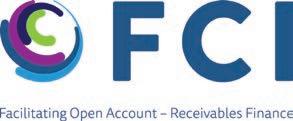

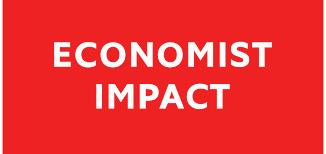
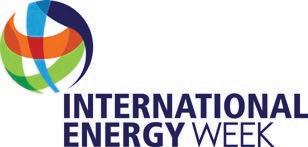






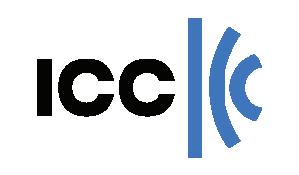

70 TRADE FINANCE TALKS www.tradefinanceglobal.com International Energy Week 31 January 2023 2 February 2023 9 February 2023 23-24 February 2023 27-28 February 2023 1-2 March 2023 7-30 March 2023 7-8 March 2023 7 March 2023 9 March 2023 13 March 2023 20-22 March 2023 28-30 March 2023 3-5 April 2023 28 February 20232 March 2023 Economic Sanctions Summit 2023 London A new era in commodity trade finance Miami GIFT City Croatia London London Dubai Switzerland Singapore London London London Virtual Trade and Investment Forum 2023 Regional Conference on Factoring in CEE Effective Finance and Treasury in Africa Mines and Money Miami ExCred International U.S Economic Sanctions 2023 MENA Bank to Bank Forum Commodities Global Summit ICC Future Trade Forum C4DTI Digital Trade Conference Deep dives into commodities digitalisation Virtual Virtual Digital Revolution of Receivables Finance DATE CONFERENCE PROVIDER LOCATION
Fintech & Emerging Payment Systems
8th EU Factoring Summit



Instant Payments & Fraud Management Summit

Commodity Trading Week

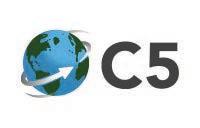

Mines and Money Connect London




Mines and Money Online Connect
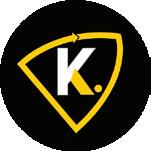
European Forum on Global Economic Sanctions

Multimodal UK

Transform Payments USA 2023
55th Annual Meeting
Mines and Money IMARC
Commodities Asia Summit
Mines and Money London
71 www.tradefinanceglobal.com UPCOMING CONFERENCES AND WEBINARS
April 2023
18-19
2023
April
May
June
31 October 20232 November 2023 15 November 2023 28 November 2023 30 November 2023 17 September 202321 September 2023 New York
20-21 April 2023 20 April
25-26 April 2023 25-26
2023 30 April 20233
2023 16-18 May 2023 22-23 May 2023 13-15 June 2023 13-14
2023
Germany Frankfurt London London San Francisco Virtual Berlin Birmingham Texas Morocco Sydney Singapore London
BAFT Global Annual Meeting DATE CONFERENCE PROVIDER LOCATION

AVAILABLE TO LISTEN ON Search ‘Trade Finance Talks’
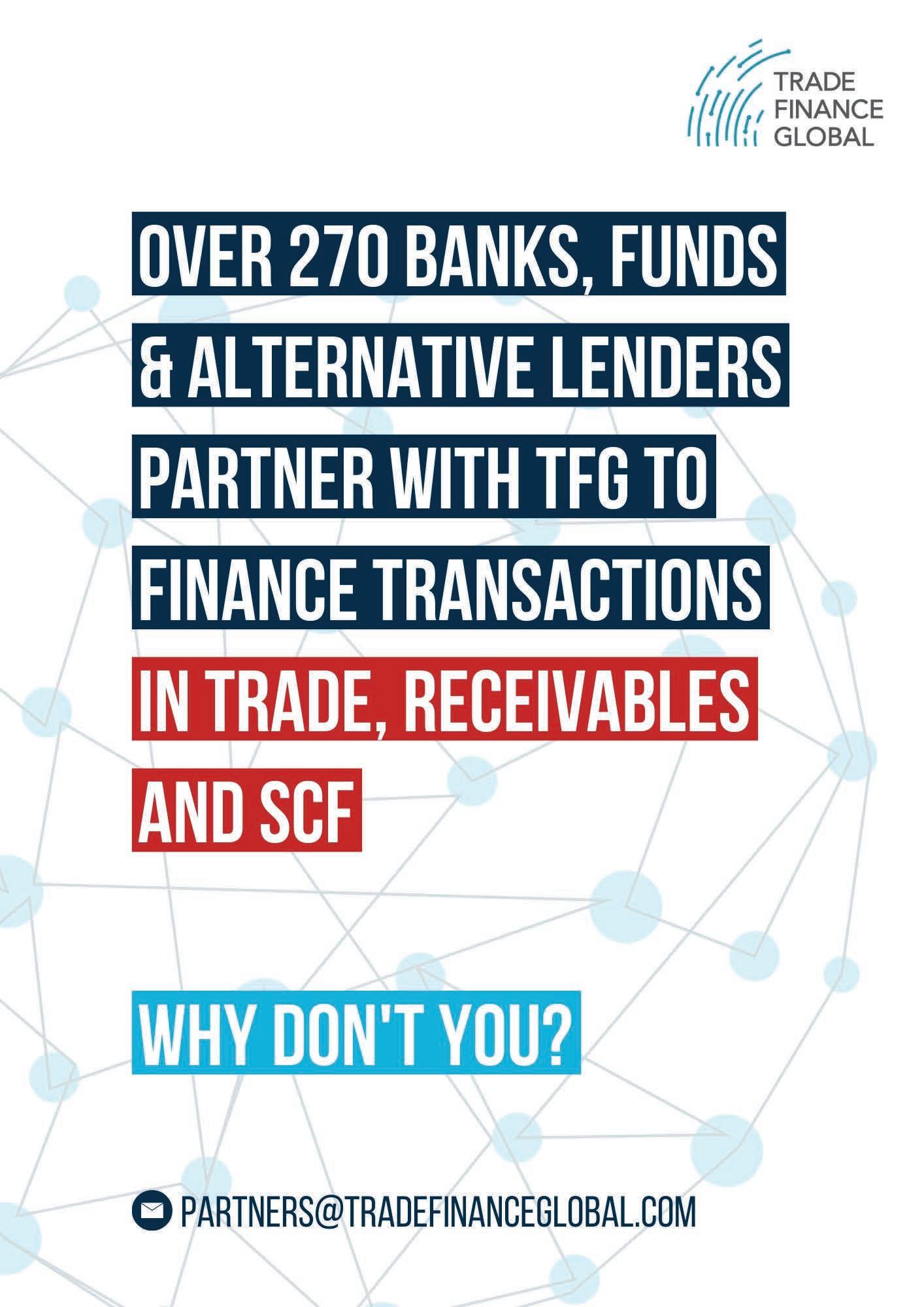

ABOUT TRADE FINANCE GLOBAL
TRADE FINANCE WITHOUT BARRIERS
Trade Finance Global (TFG) is the leading B2B fintech in trade finance. TFG’s data-led origination platform connects companies with innovative trade and receivables finance solutions from over 300 financial institutions.
This is combined with TFG’s award-winning content, informing a global audience of 160k monthly readers (6.2m impressions) – across app, podcasts, videos, magazines and research.
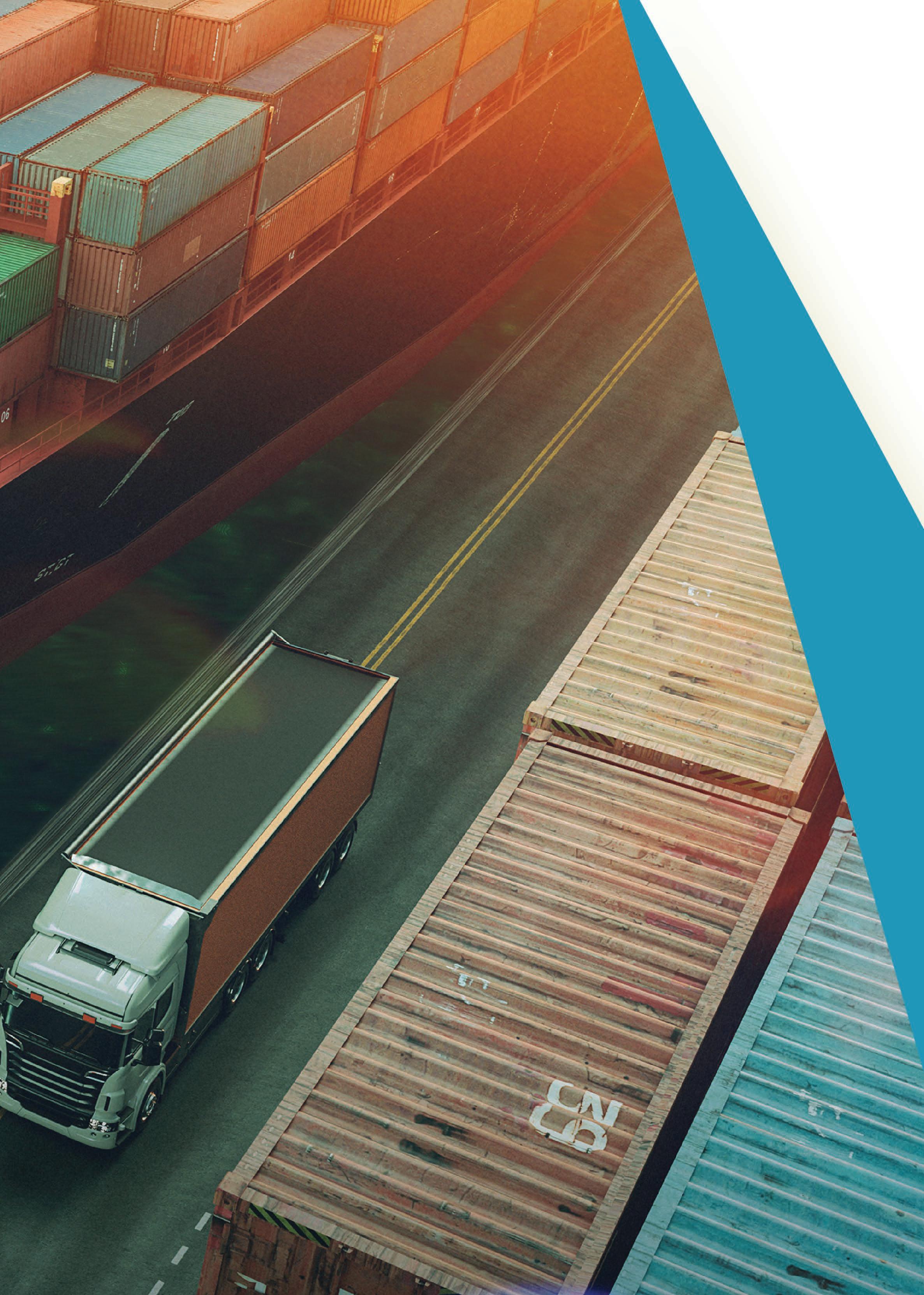
STRATEGIC PARTNERS




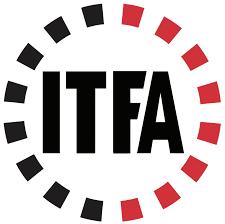







ABOUT TRADE FINANCE GLOBAL
TRADE & RECEIVABLES FINANCE
Trade Finance Global (TFG) is the leading B2B fintech in trade finance.
TFG’s data-led origination platform connects companies with innovative trade and receivables finance solutions from over 300 financial institutions.
We assist specialist companies to scale their trade volumes, by matching them with appropriate financing structures – based on geographies, products, sector and trade cycles. Contact us to find out more.
TRADE INFORMATION & EDUCATION
TFG is a leading provider of educational resources on international trade and trade financeacross app, podcasts, videos, magazines and research.
Attracting around 160k monthly readers, our publications have a global audience in 187 countries.
Our specialist content hubs provide free guides, thought leadership articles and features on International Trade, Letters of Credit, Shipping & Logistics, Risk & Insurance, Treasury & FX, Blockchain & DLT, Legal, Receivables and Export Finance.
TFG are strategic media partners for trade conference providers around the world.
TFG also hosts the International Trade Professionals Programme with LIBF, and funds the Accelerate Scholarship, a grant to help students to pursue a career in trade. Others know us through our Annual International Trade Awards, celebrating outstanding players and contributors in the trade ecosystem.
Through these activities, TFG is democratising trade finance.
76 TRADE FINANCE TALKS www.tradefinanceglobal.com
77 www.tradefinanceglobal.com CONTACT MAGAZINE AND ADVERTISING talks@tradefinanceglobal.com EDITORIAL AND PUBLISHING media@tradefinanceglobal.com TRADE TEAM trade.team@tradefinanceglobal.com ENQUIRIES info@tradefinanceglobal.com TELEPHONE +44 (0) 20 3865 3705 WEBSITE www.tradefinanceglobal.com OUR LONDON OFFICES Trade Finance Global 201 Haverstock Hill Second Floor London NW3 4QG Trade Finance Global 73 New Bond Street London W1S 1RS Trade Finance Global 14 Hatton Garden Third Floor London EC1N 8AT
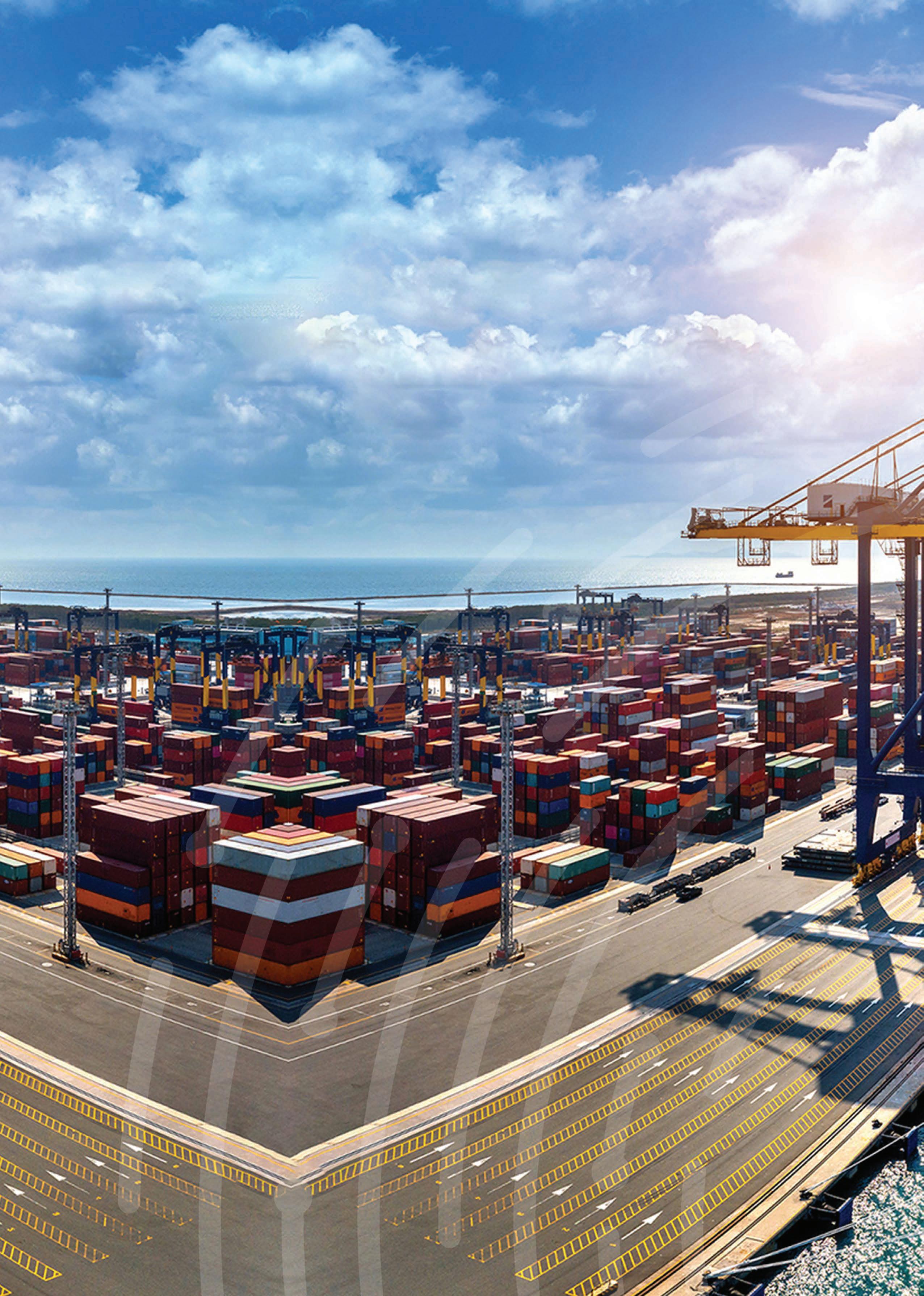






 Director
Director





































 JAMES HOOKHAM Director
JAMES HOOKHAM Director



























 SAM
SAM












































